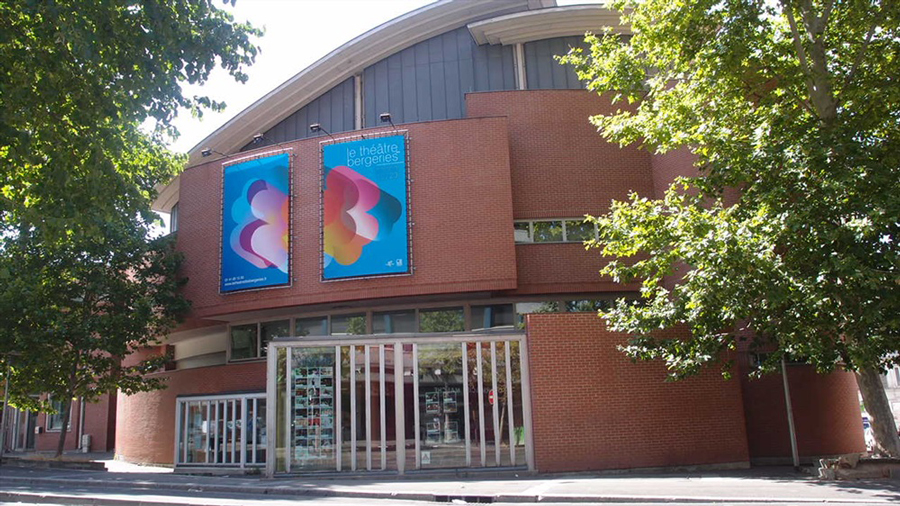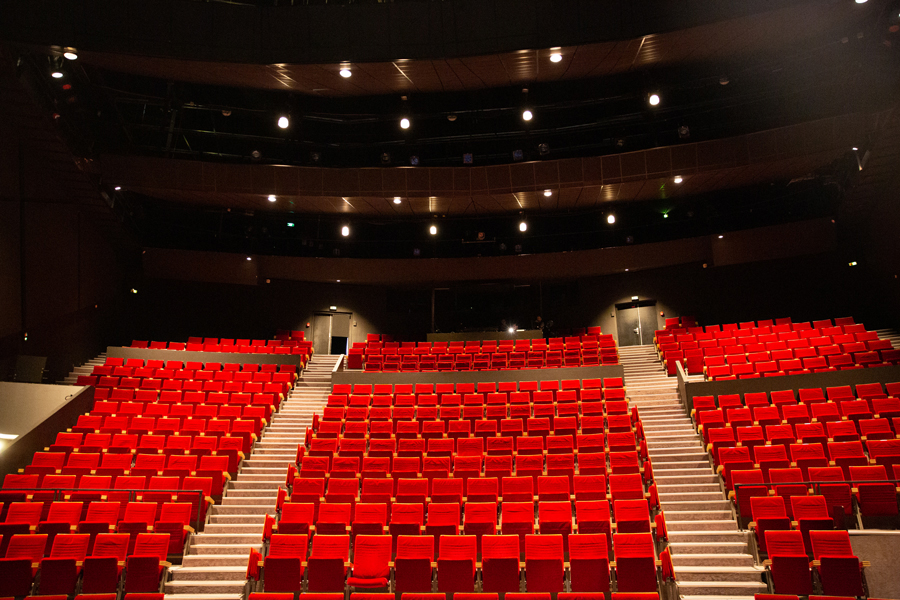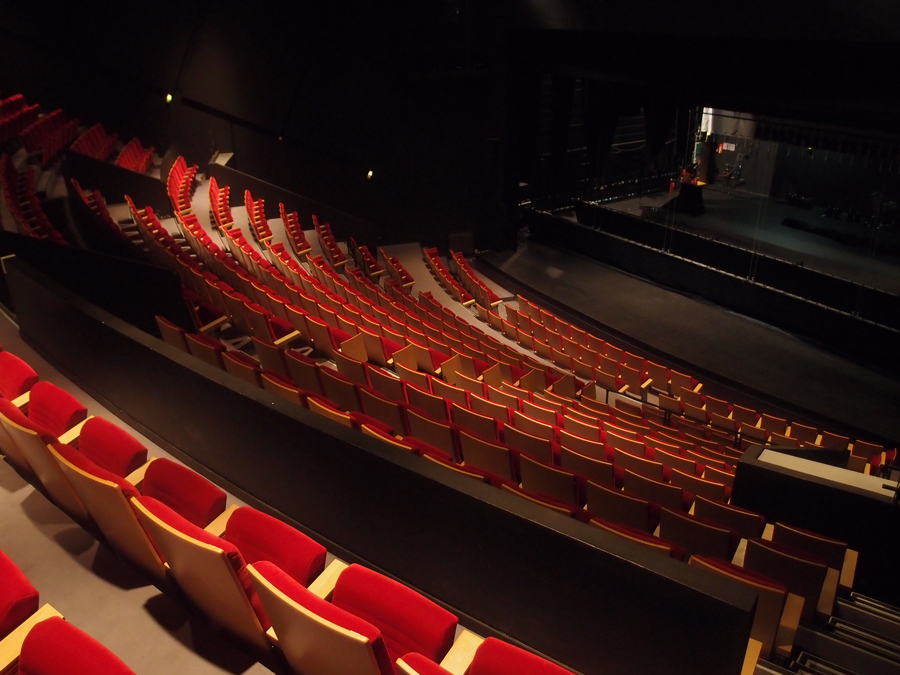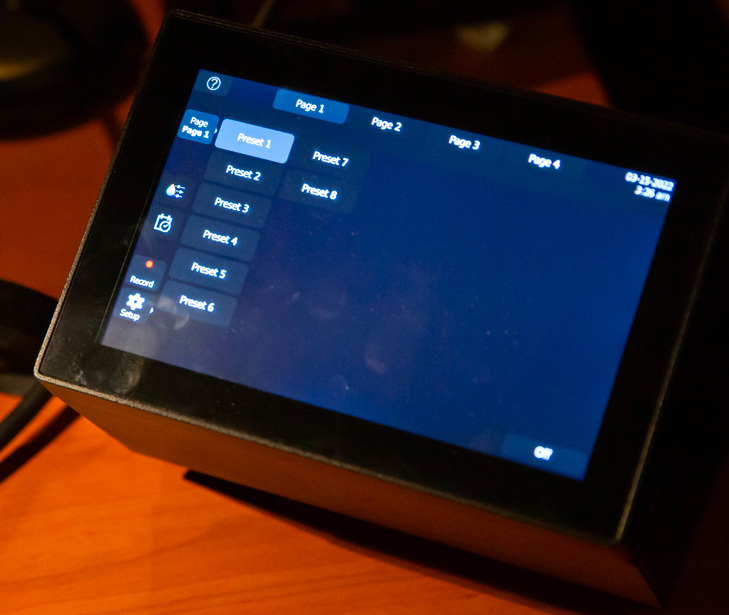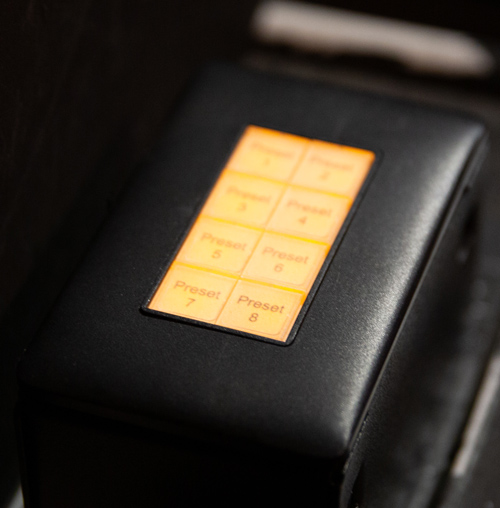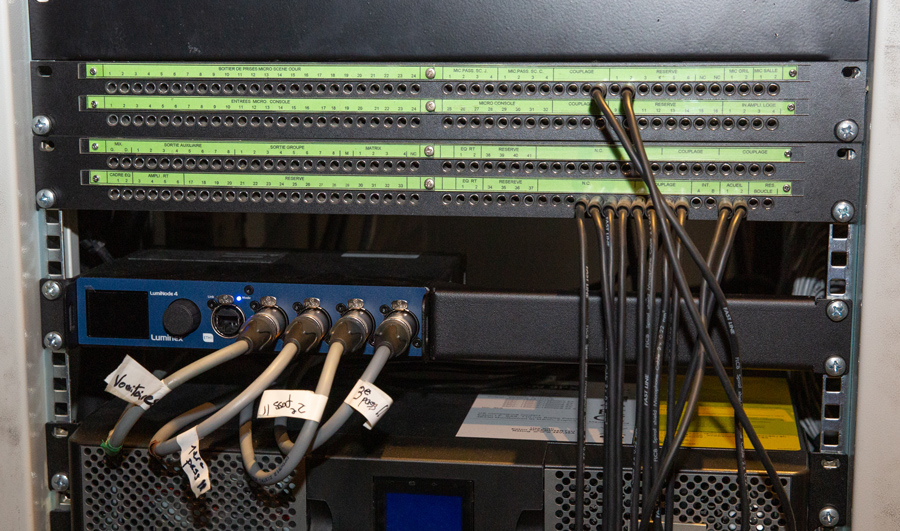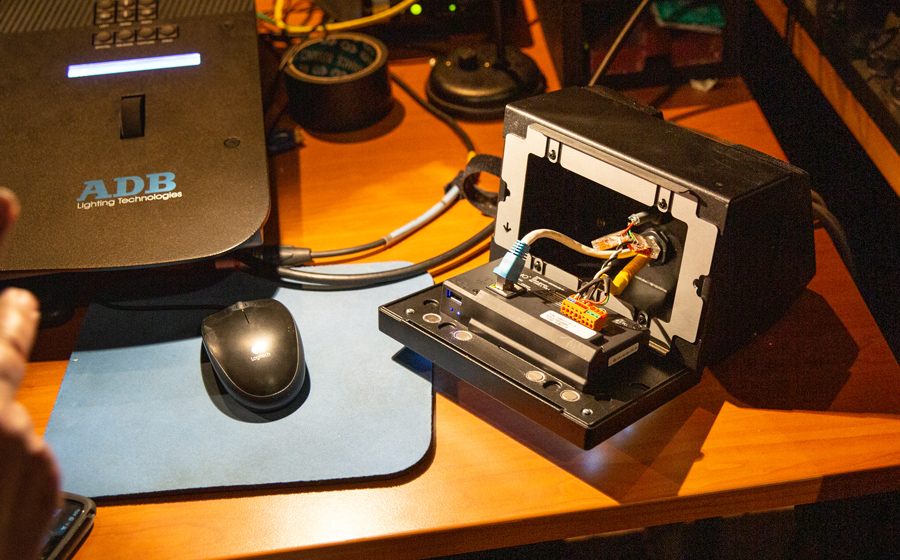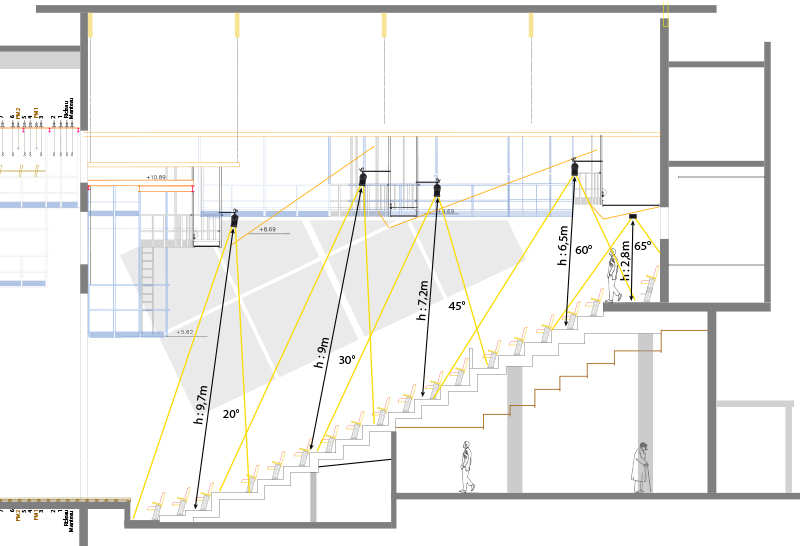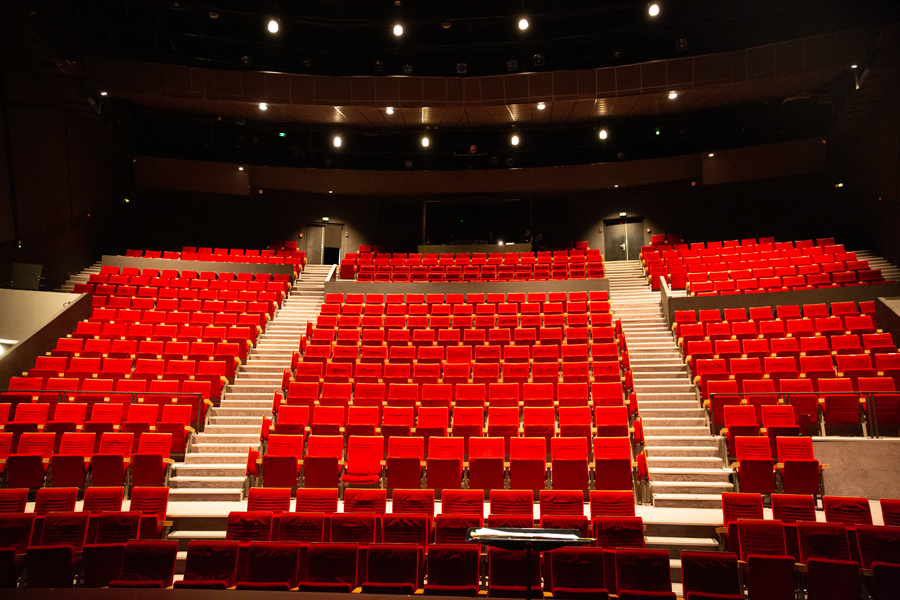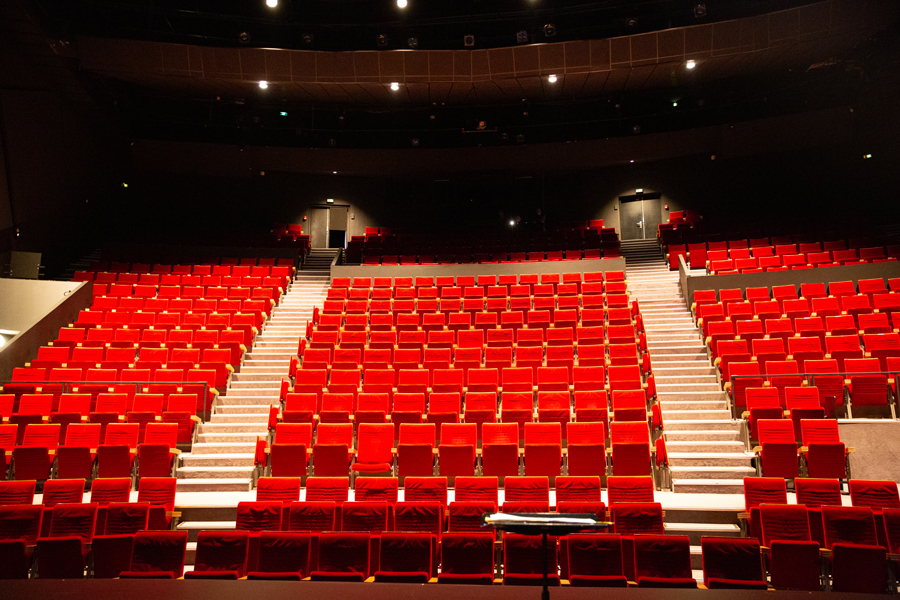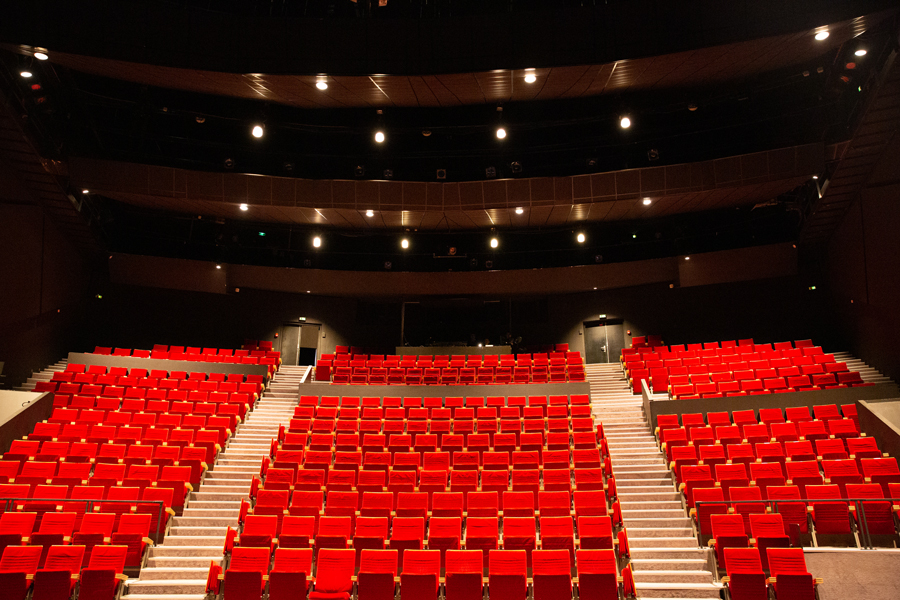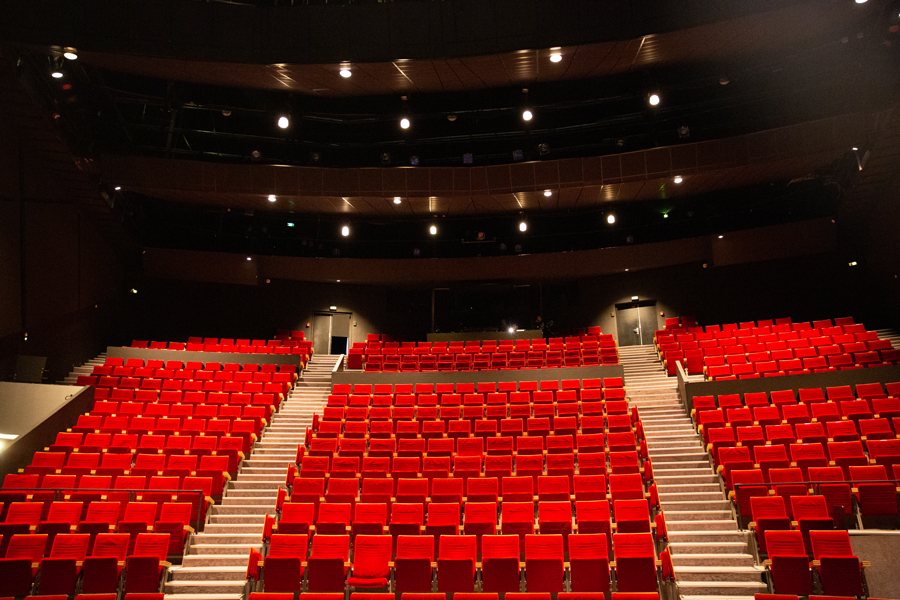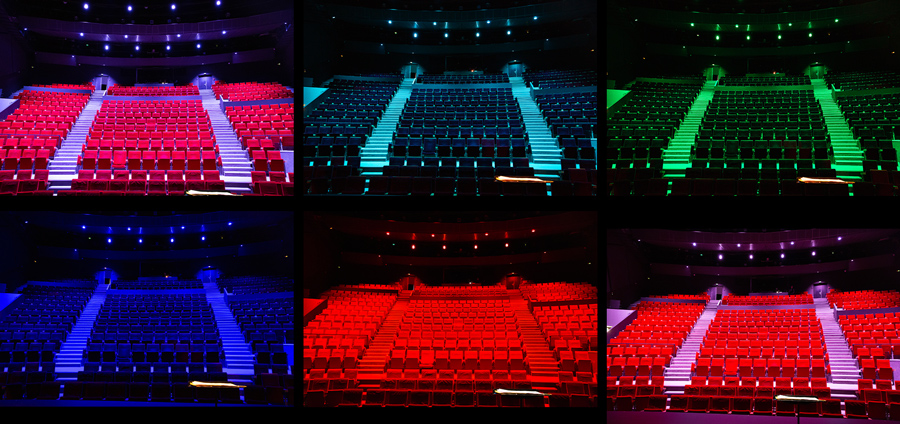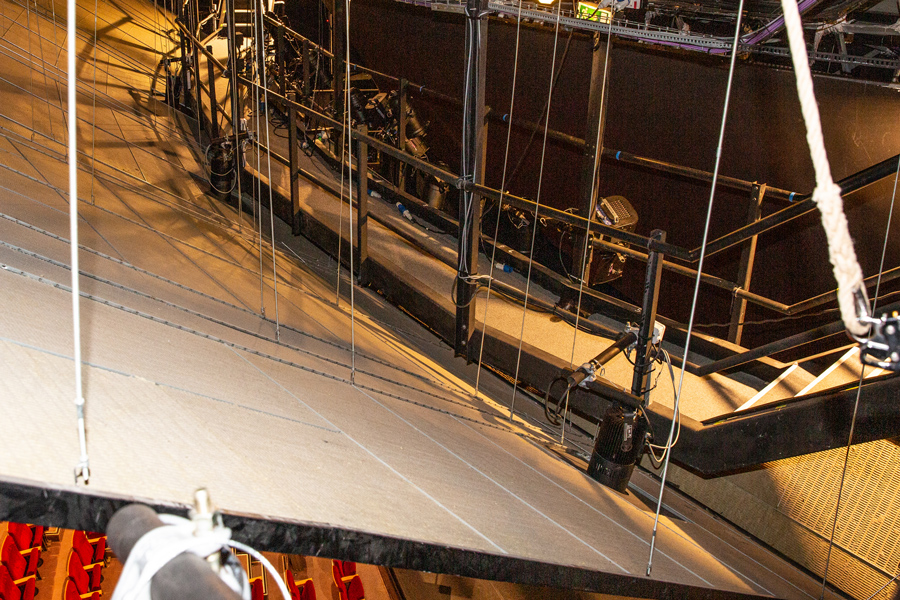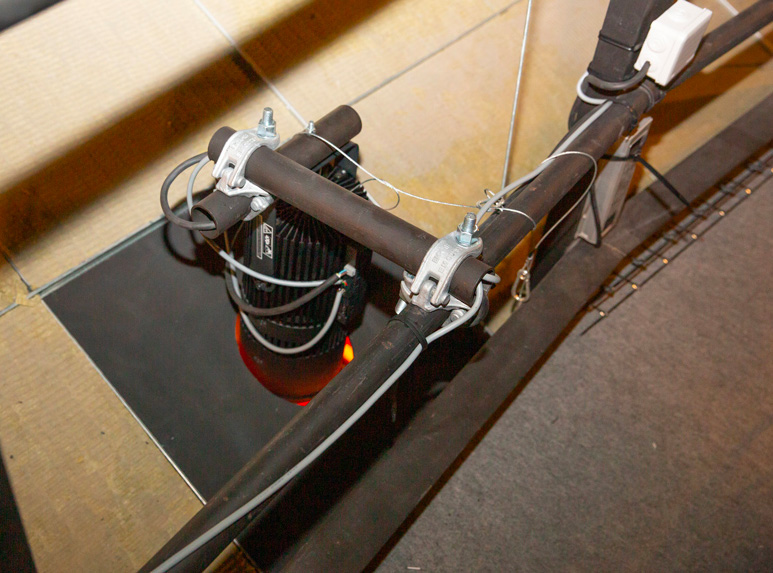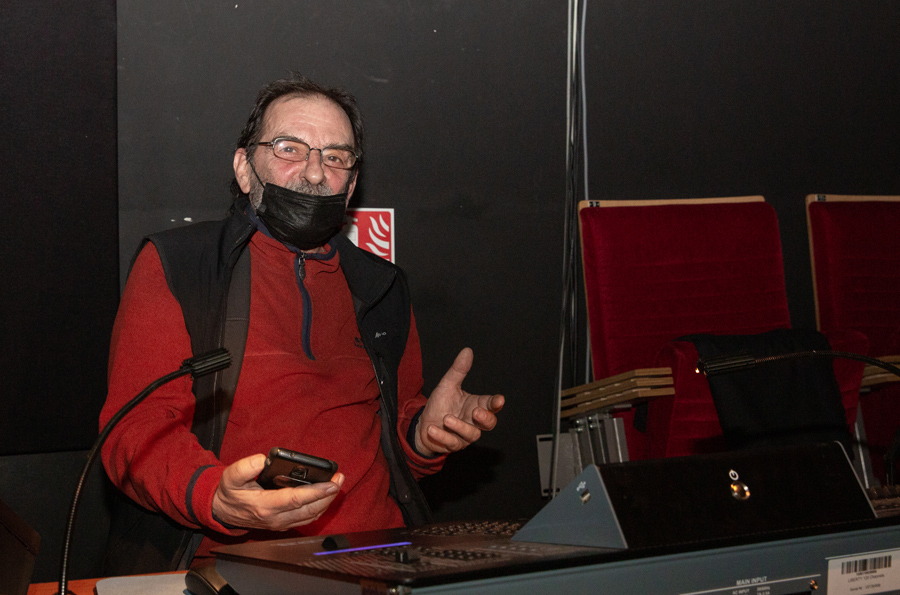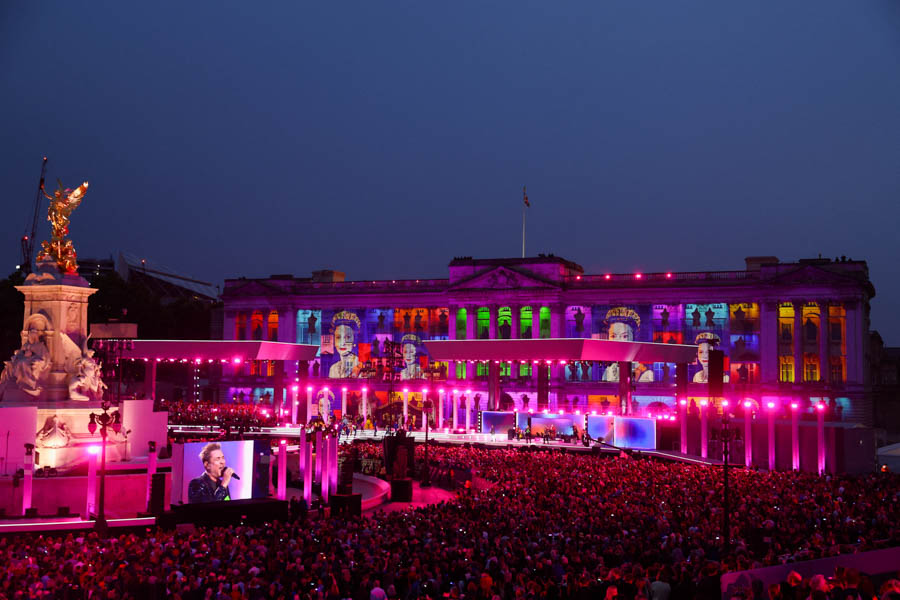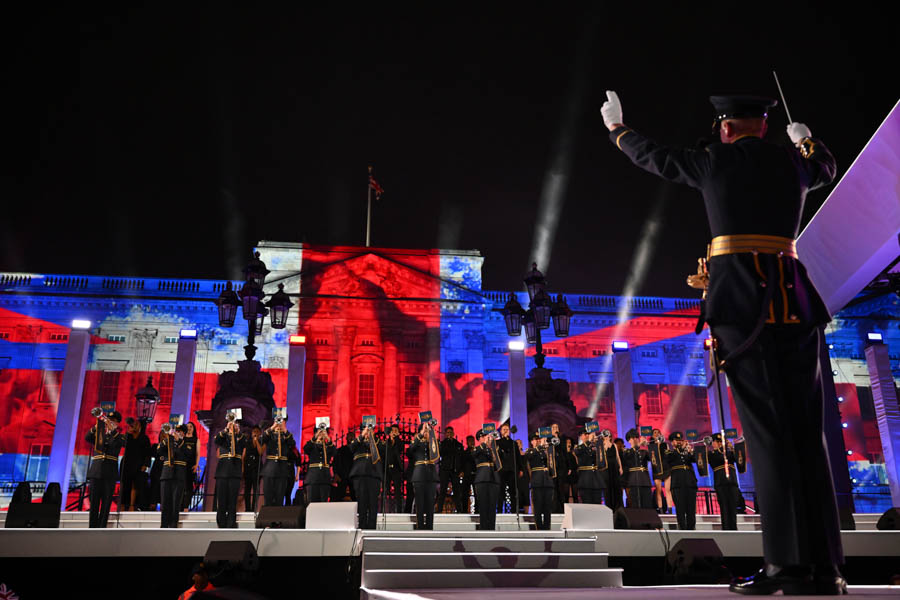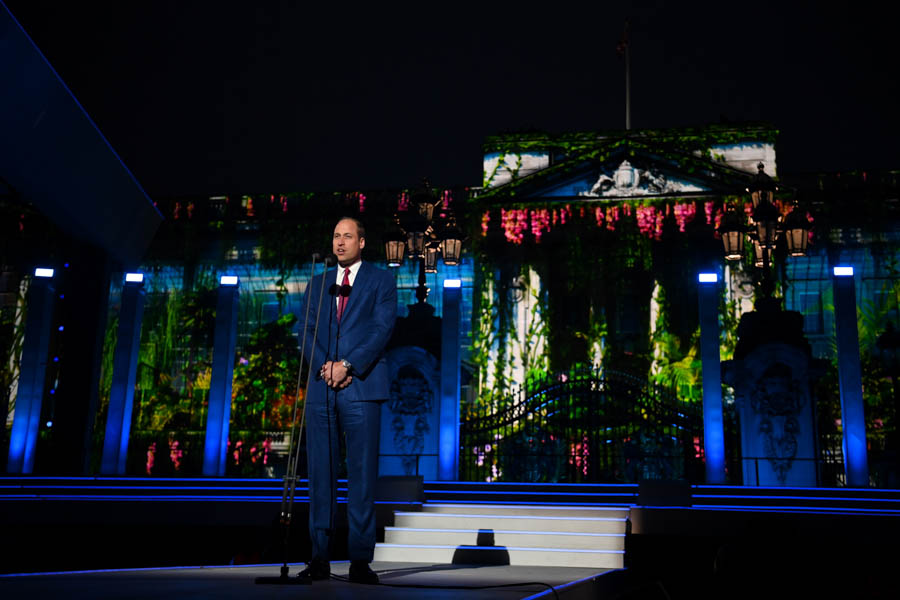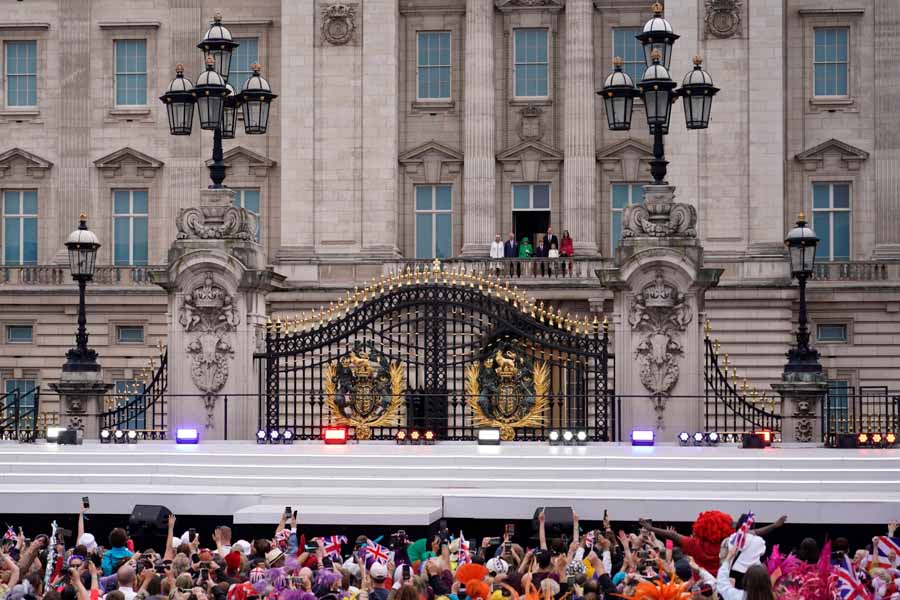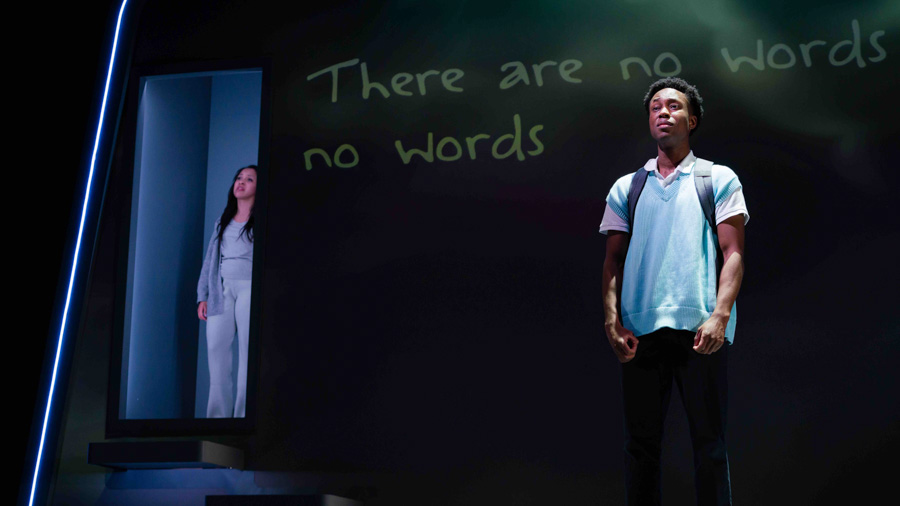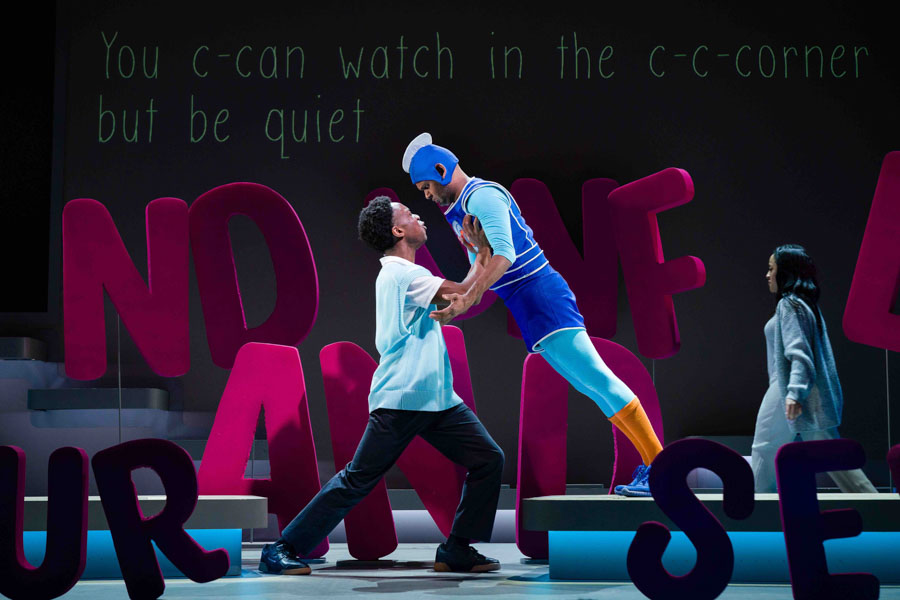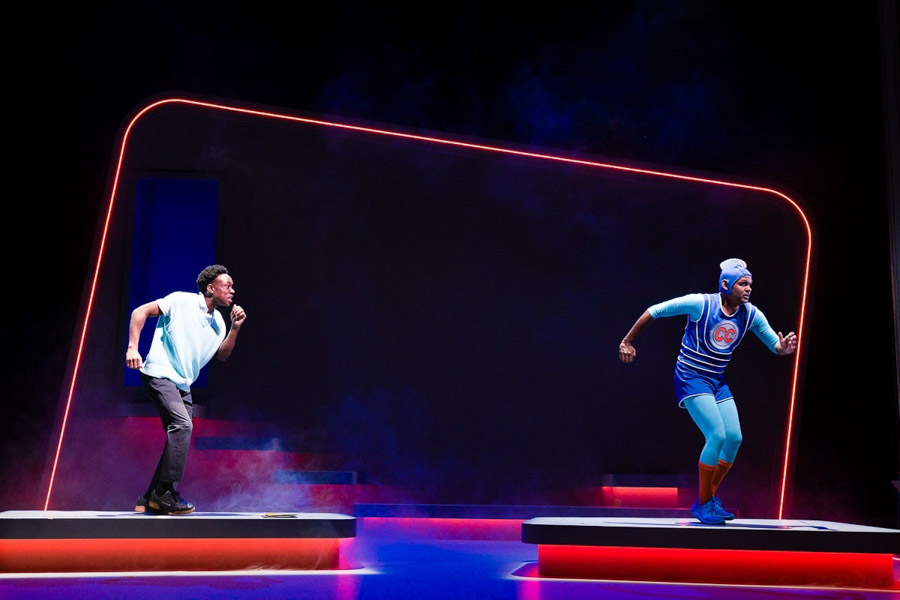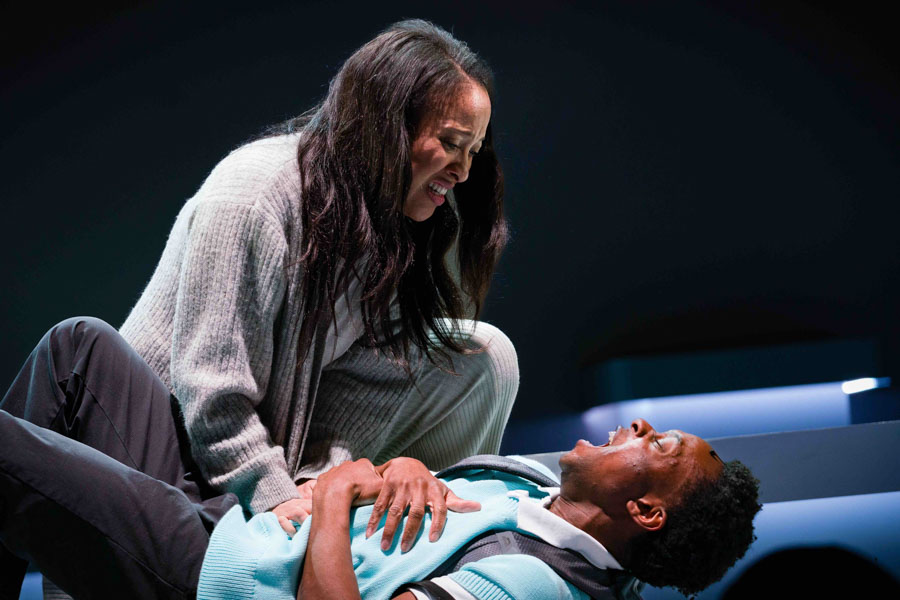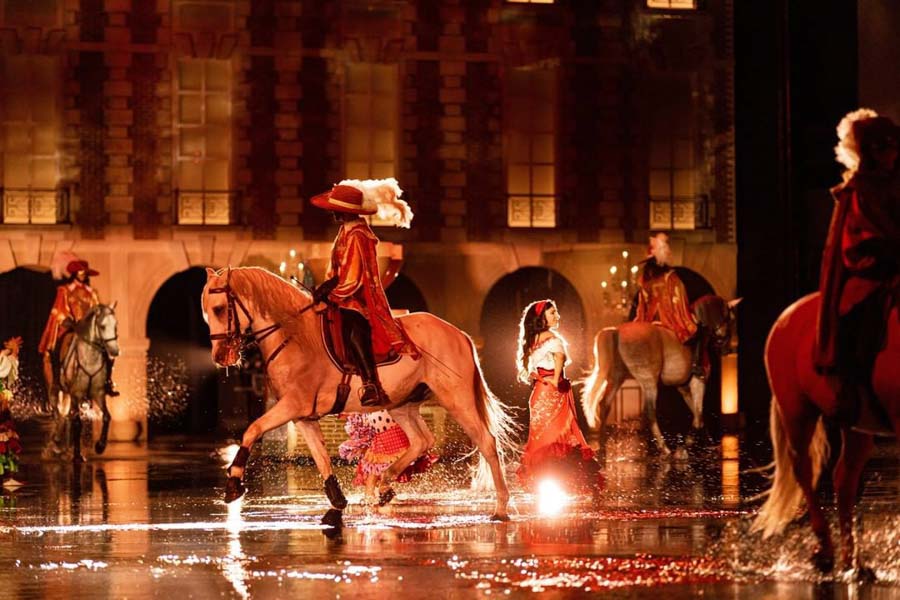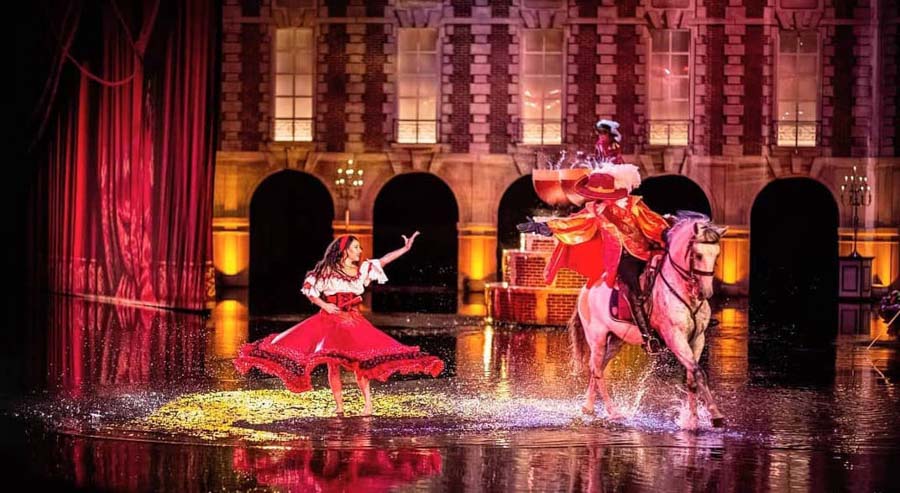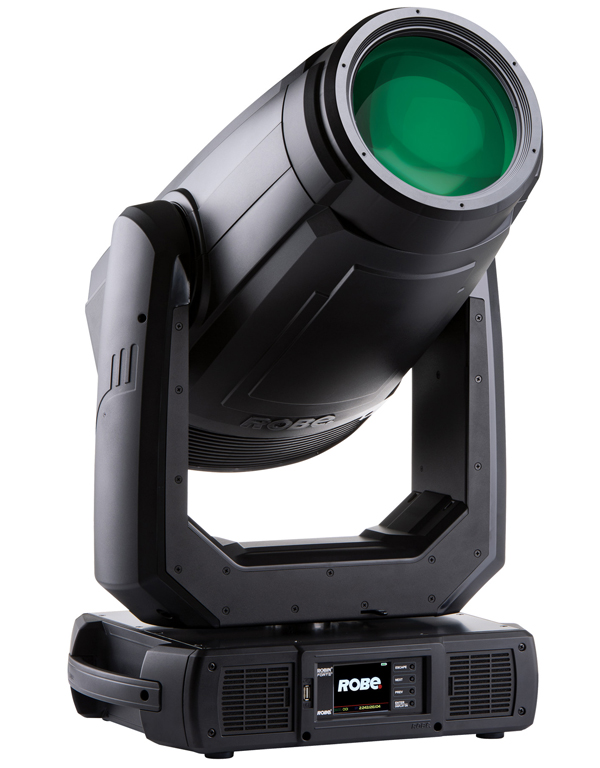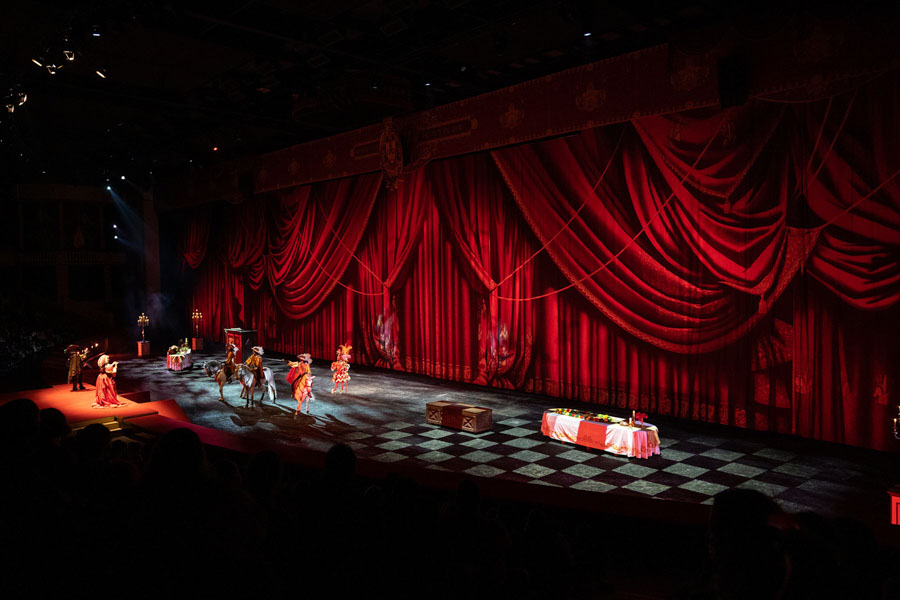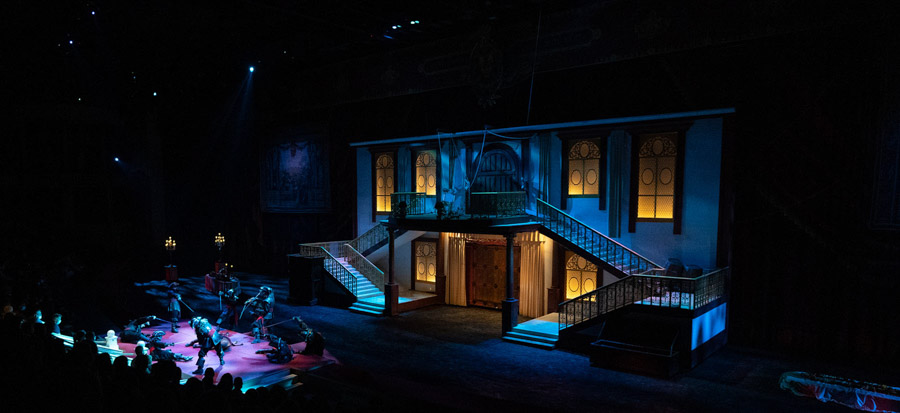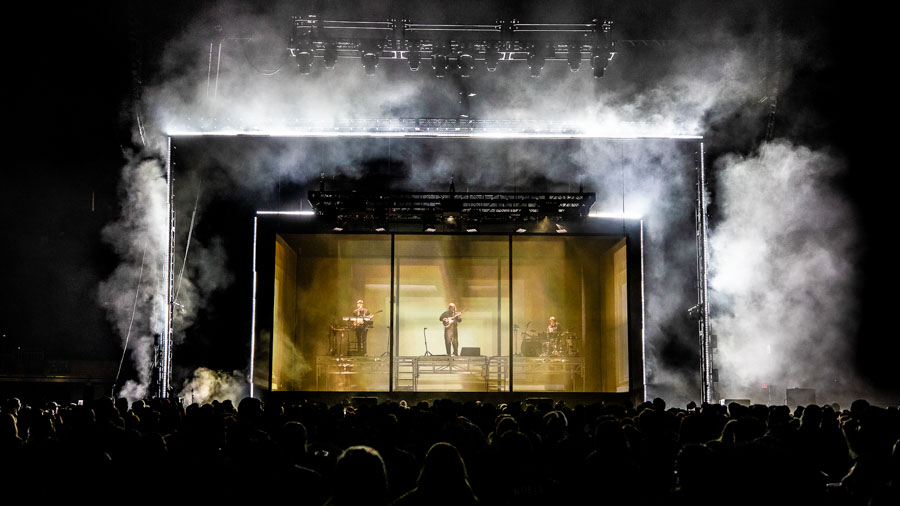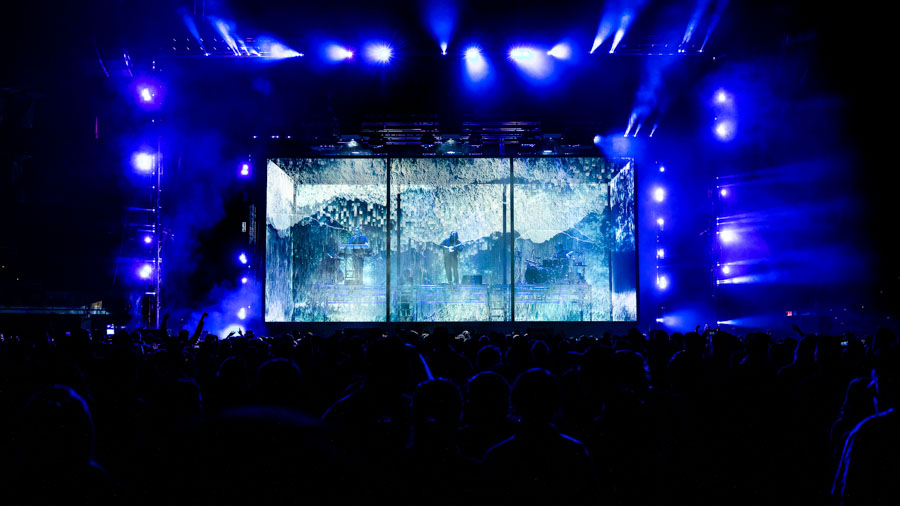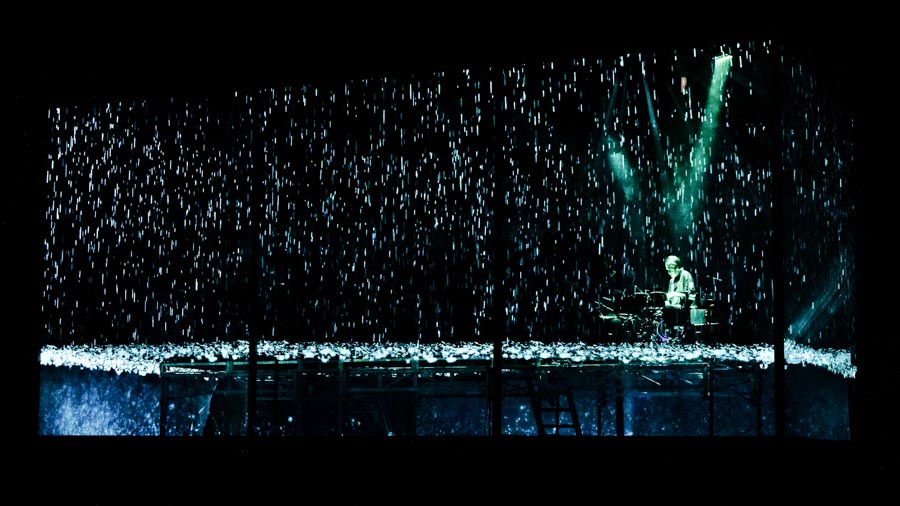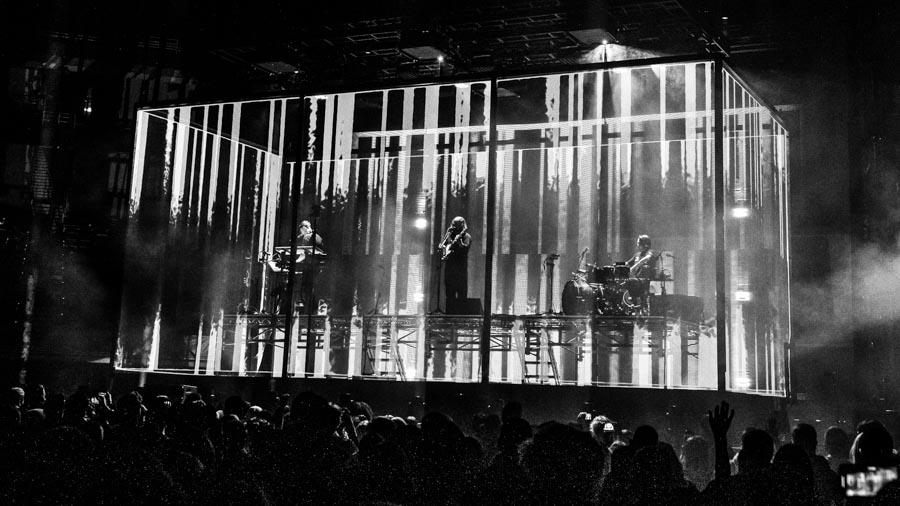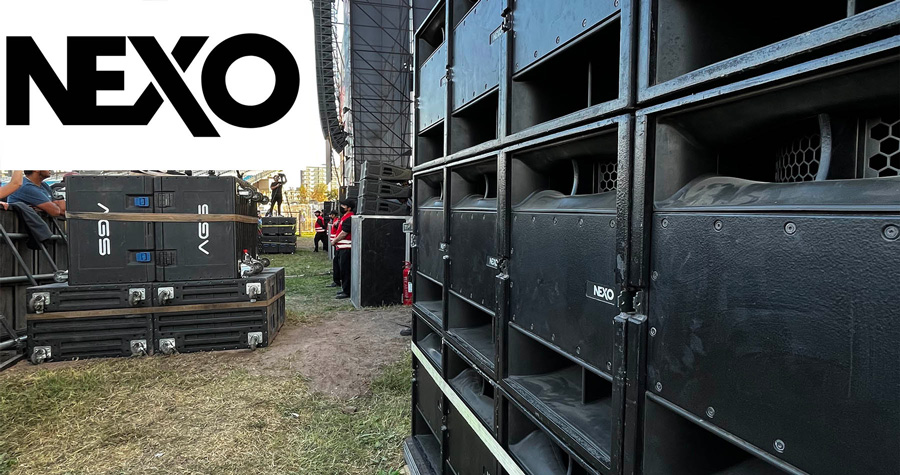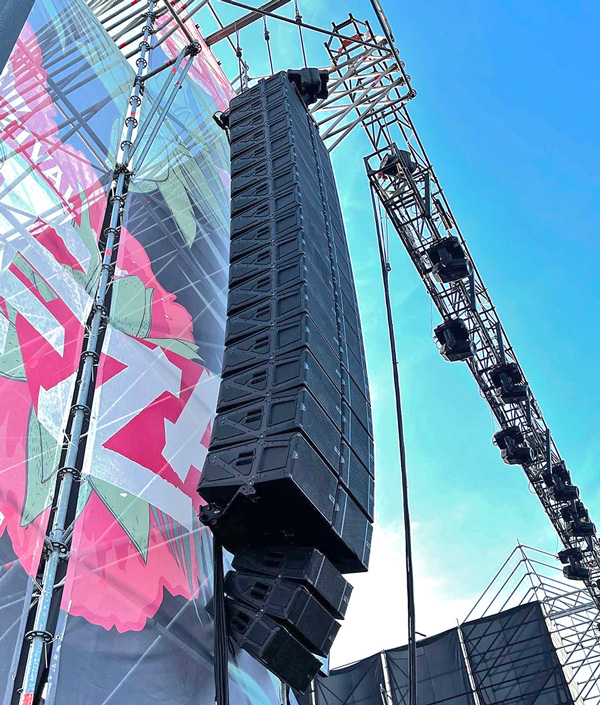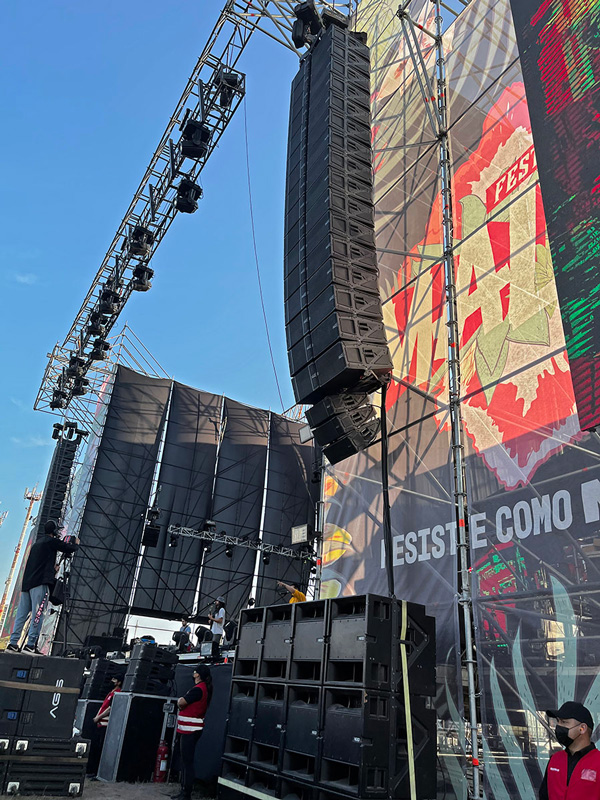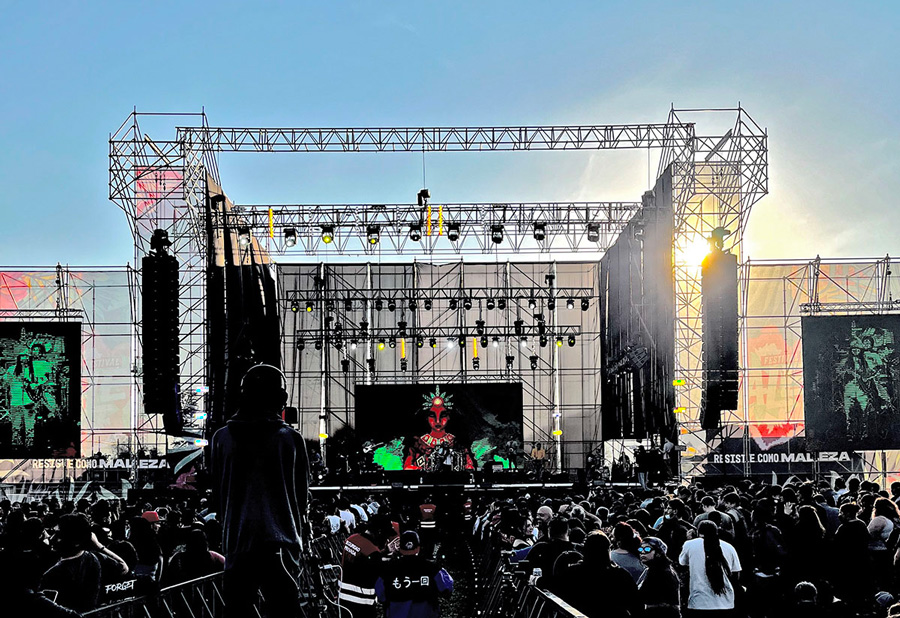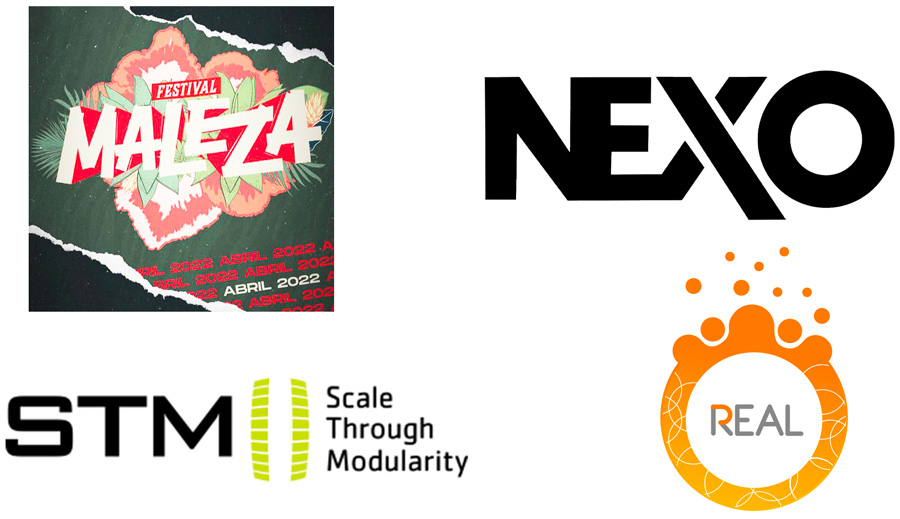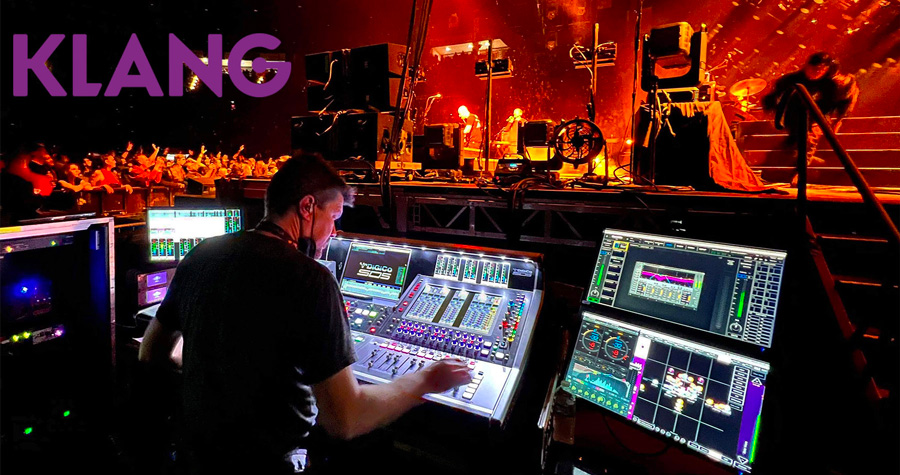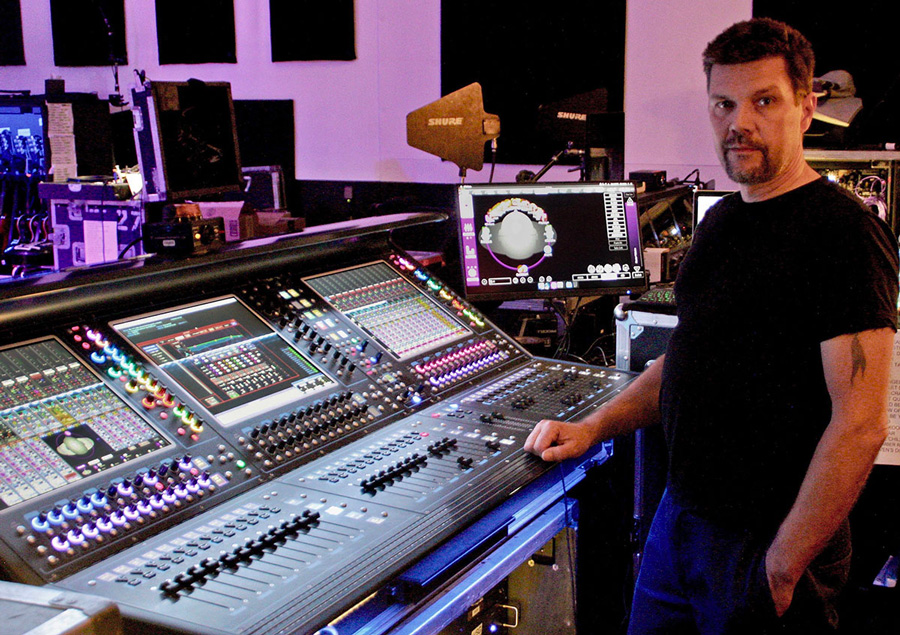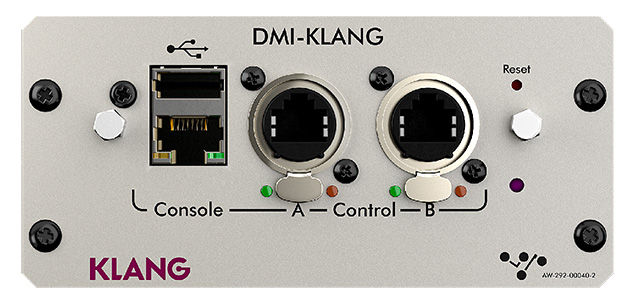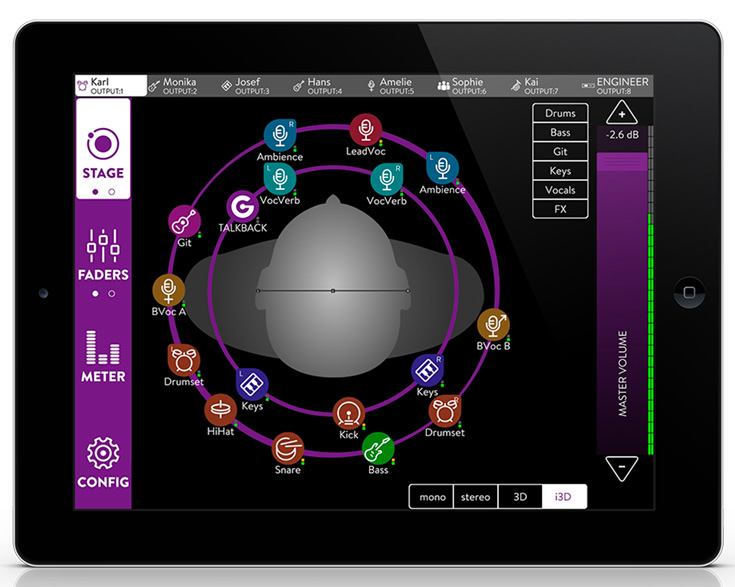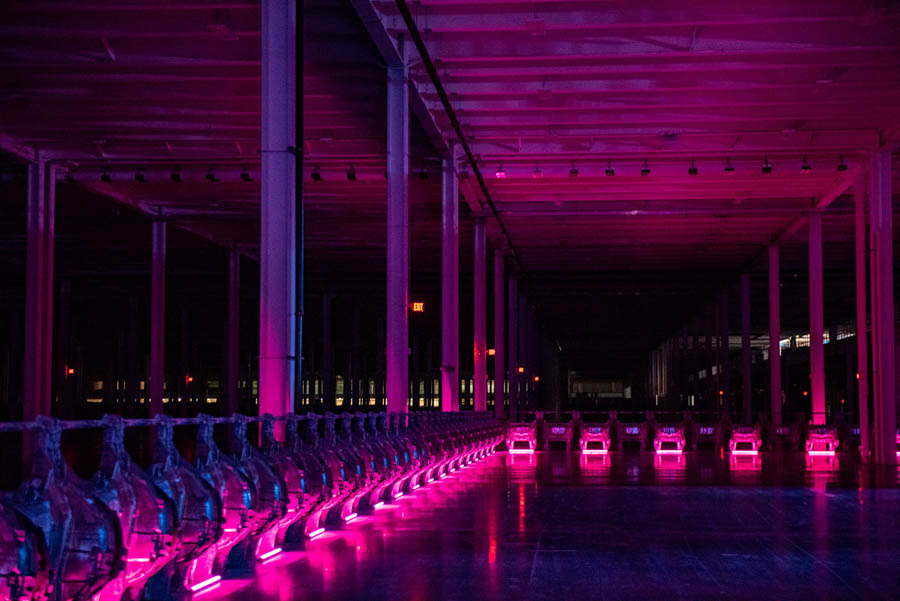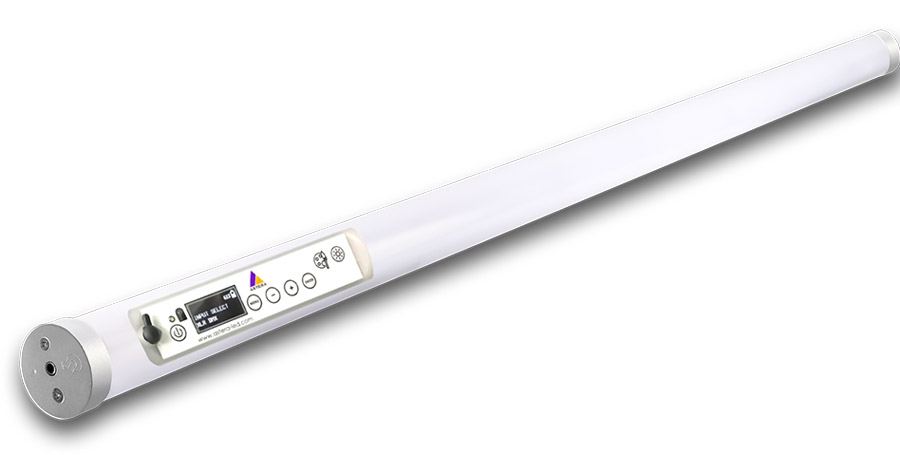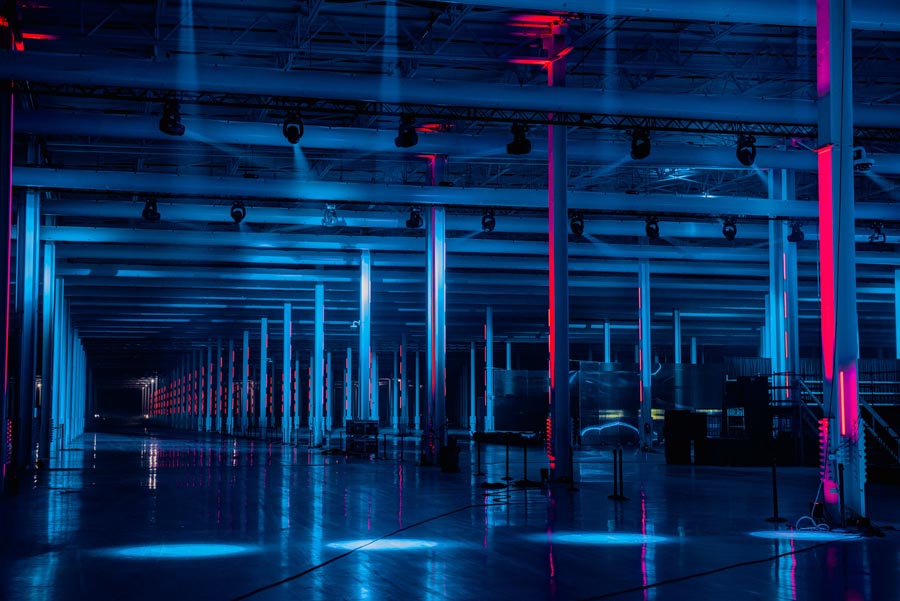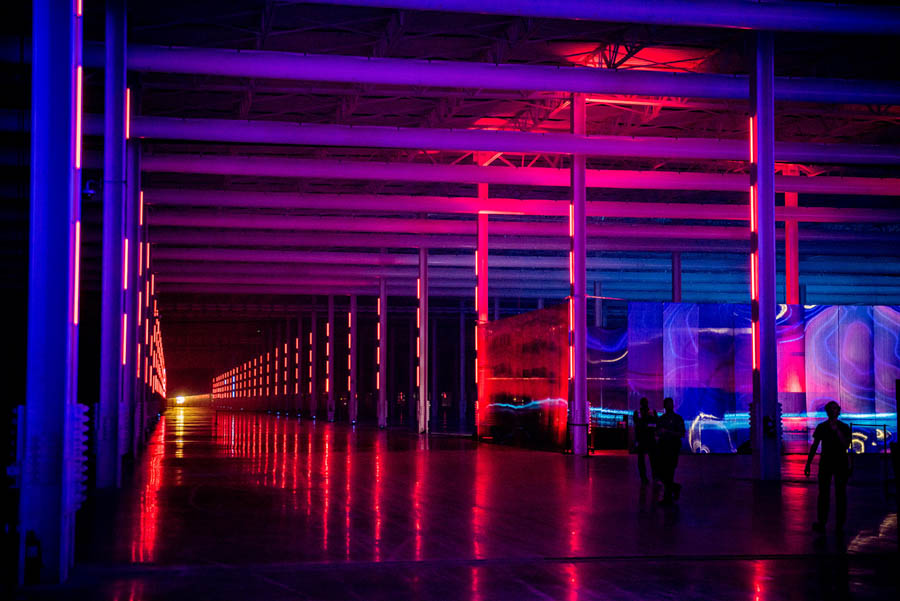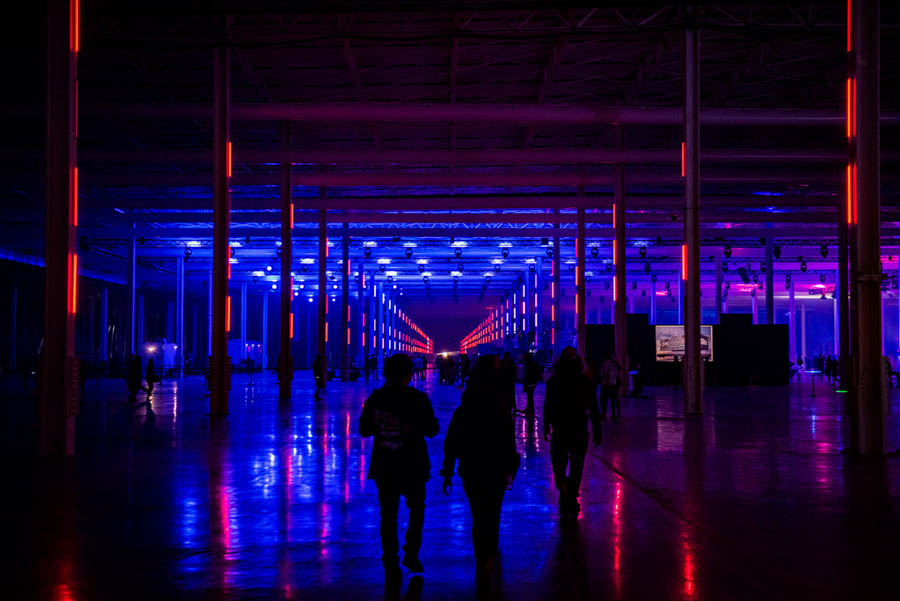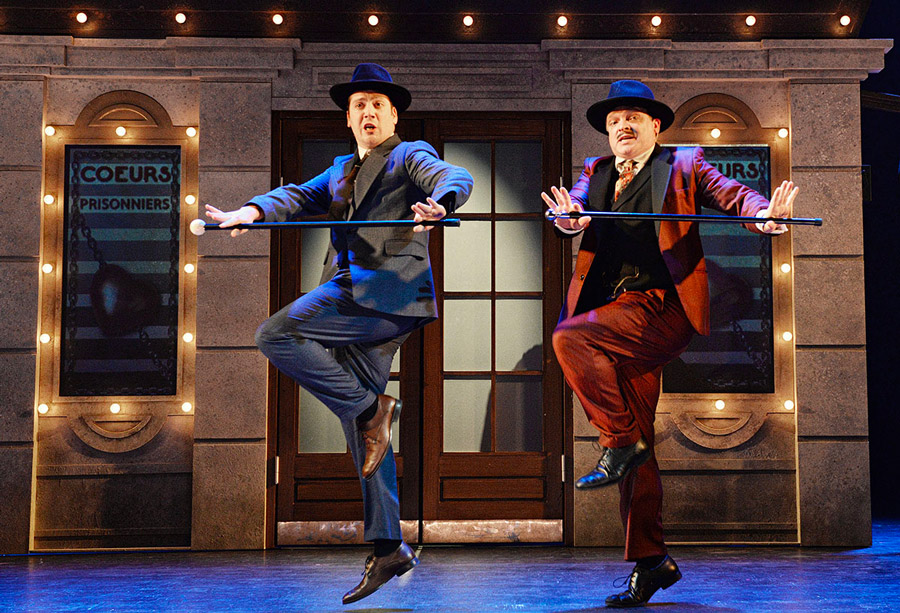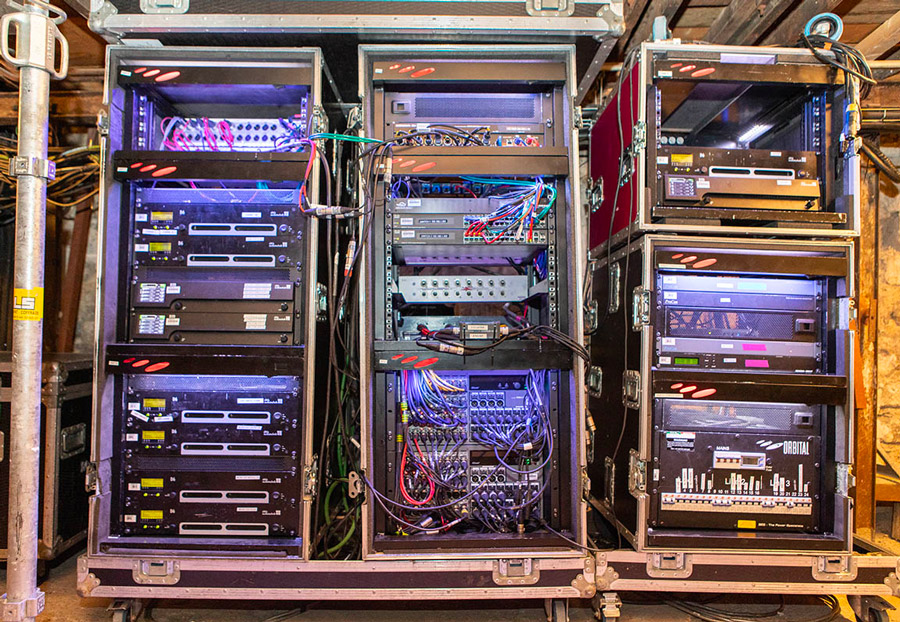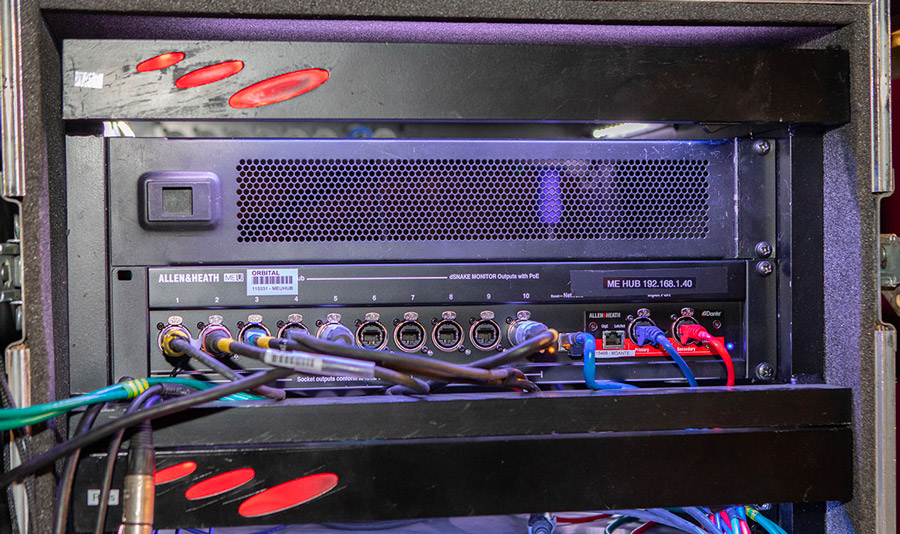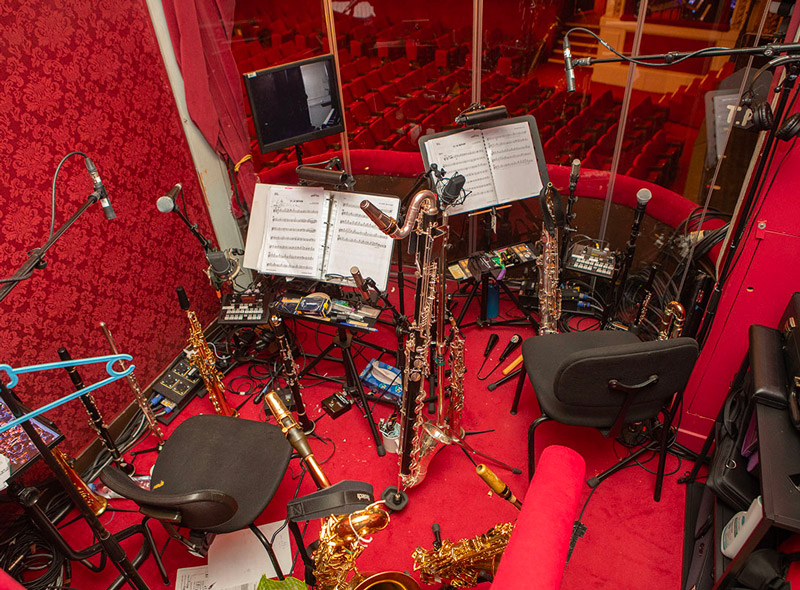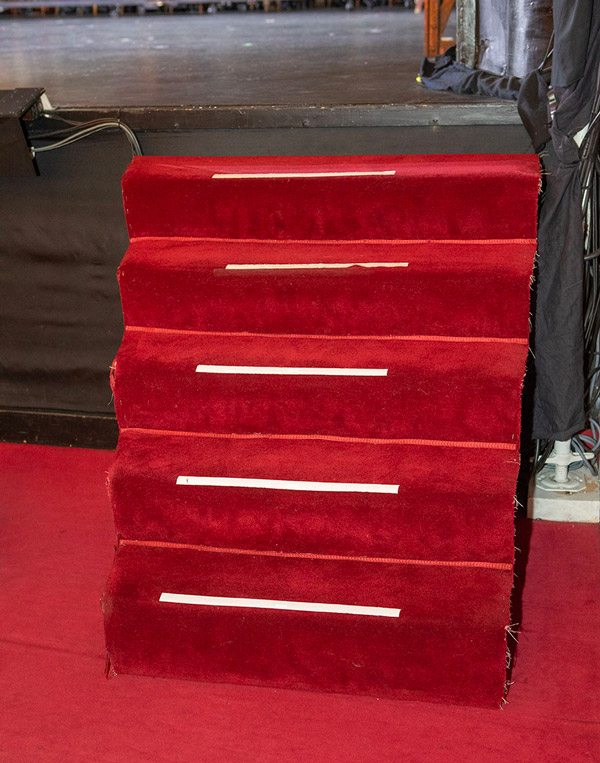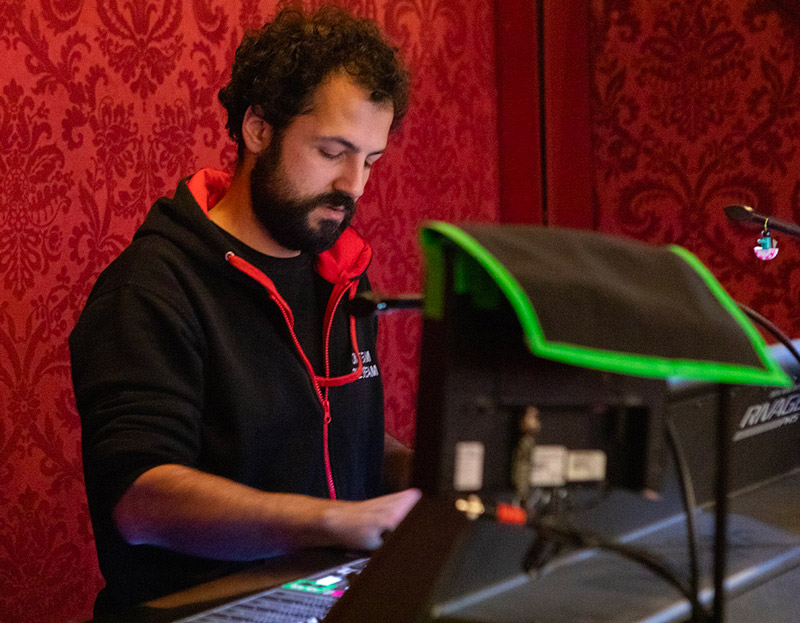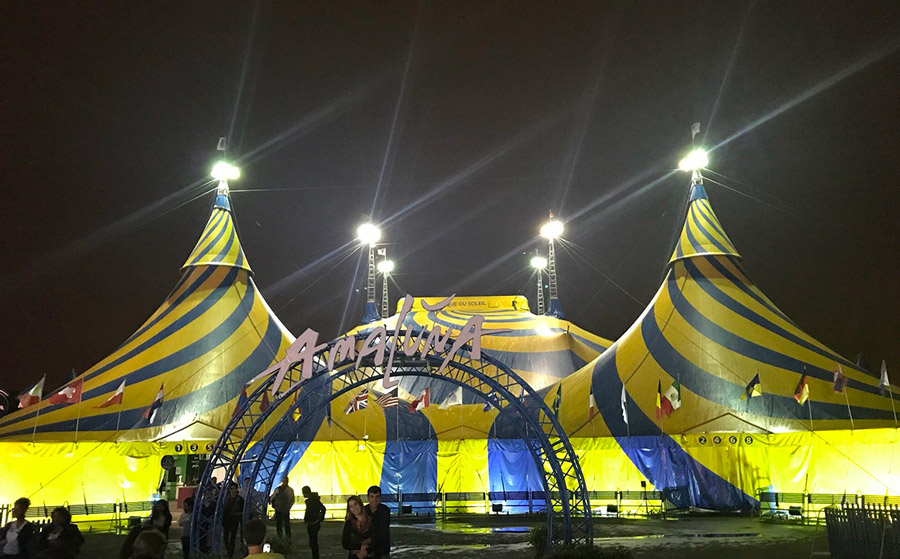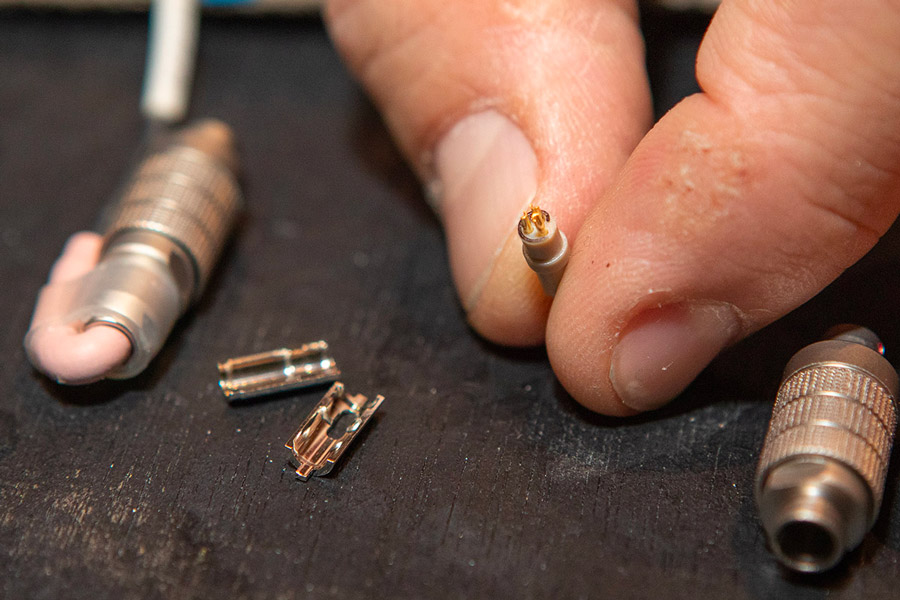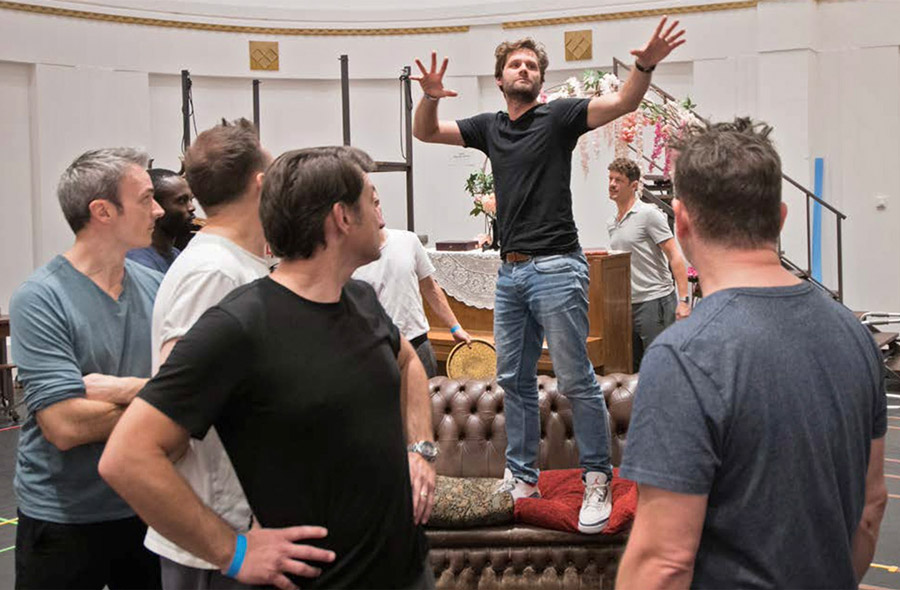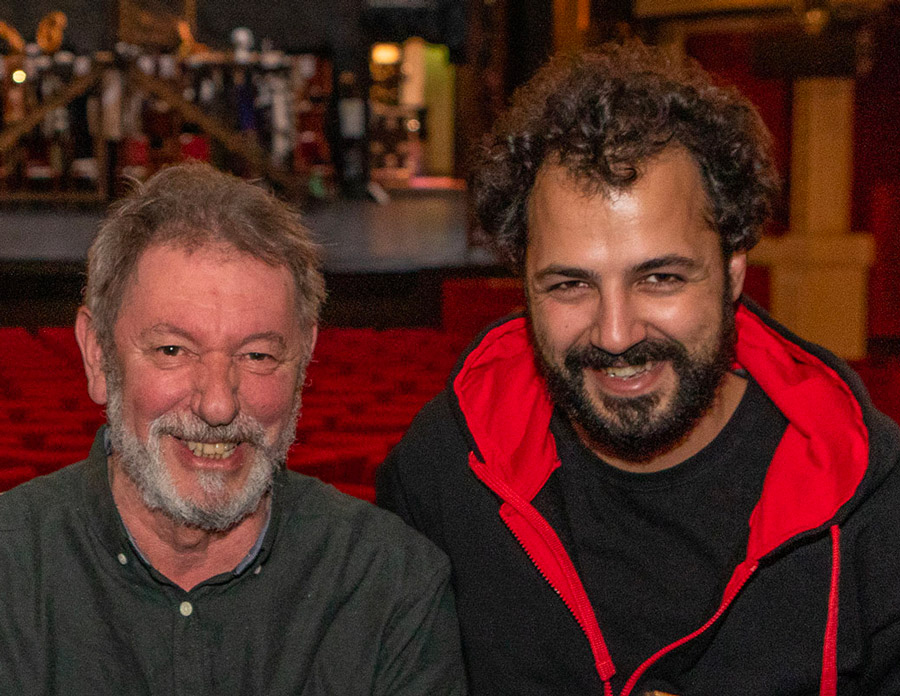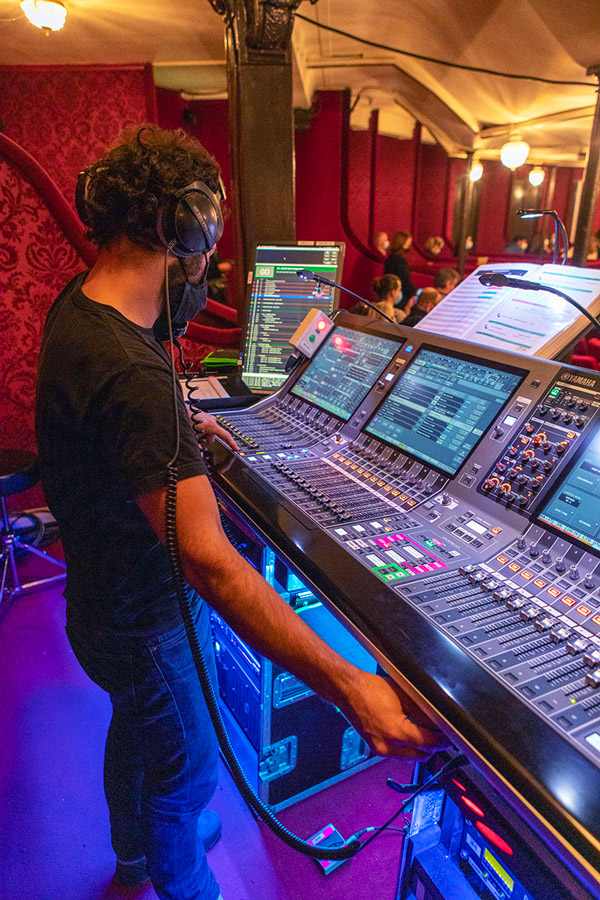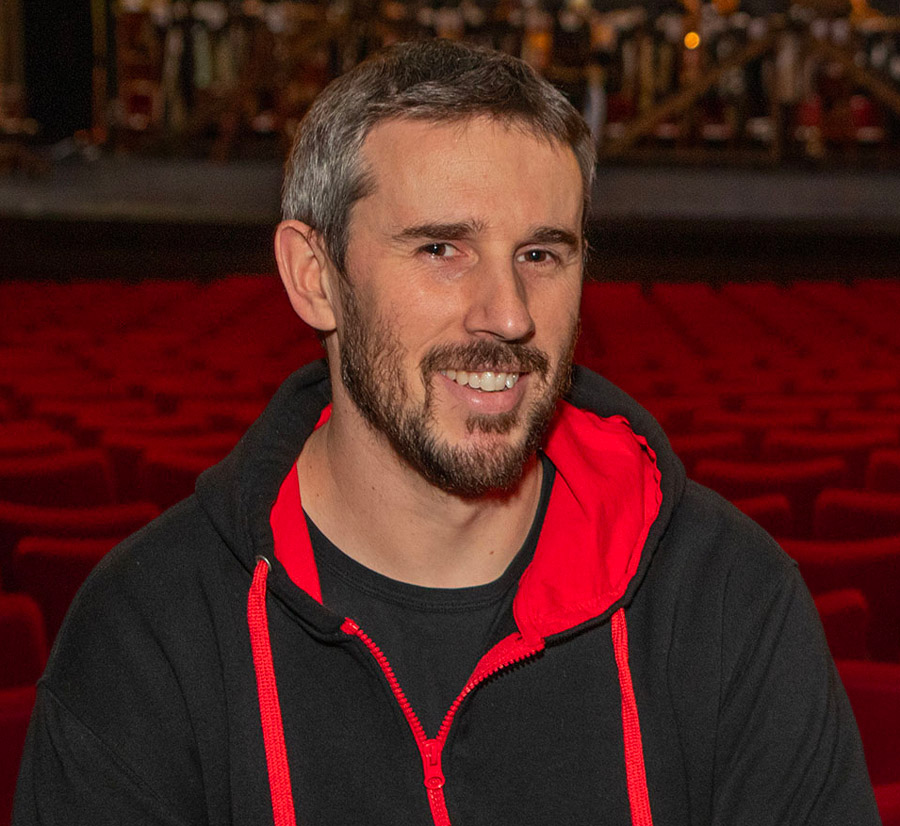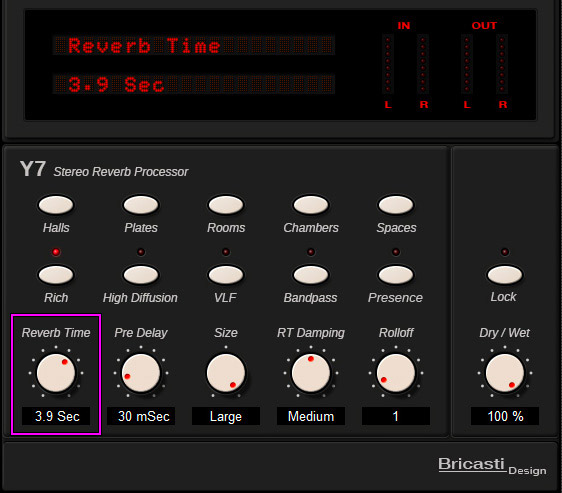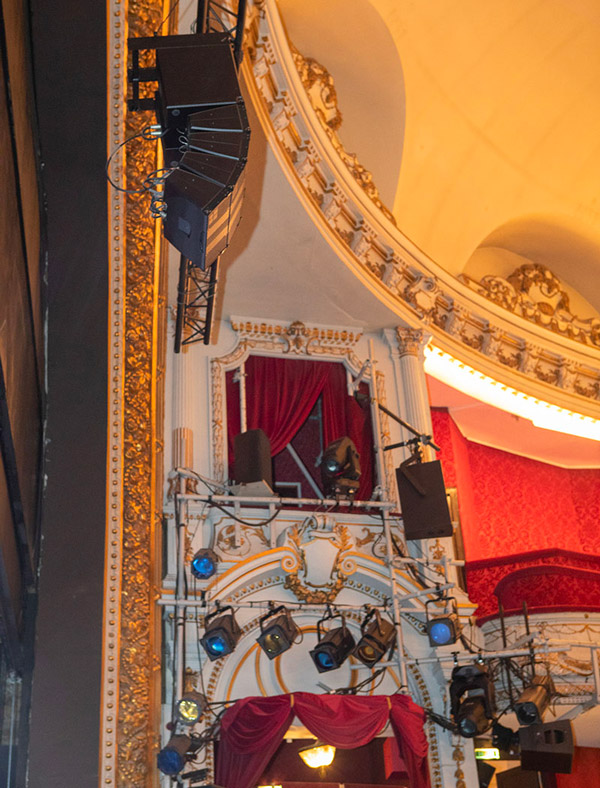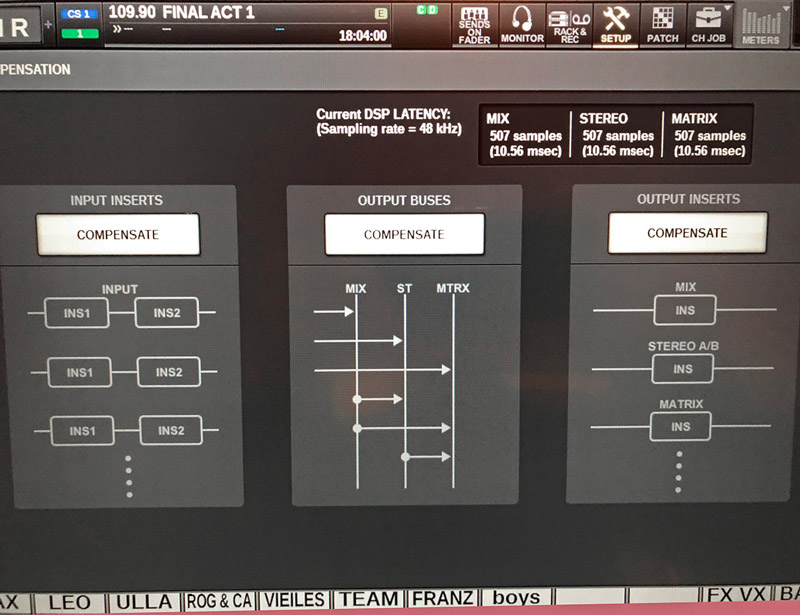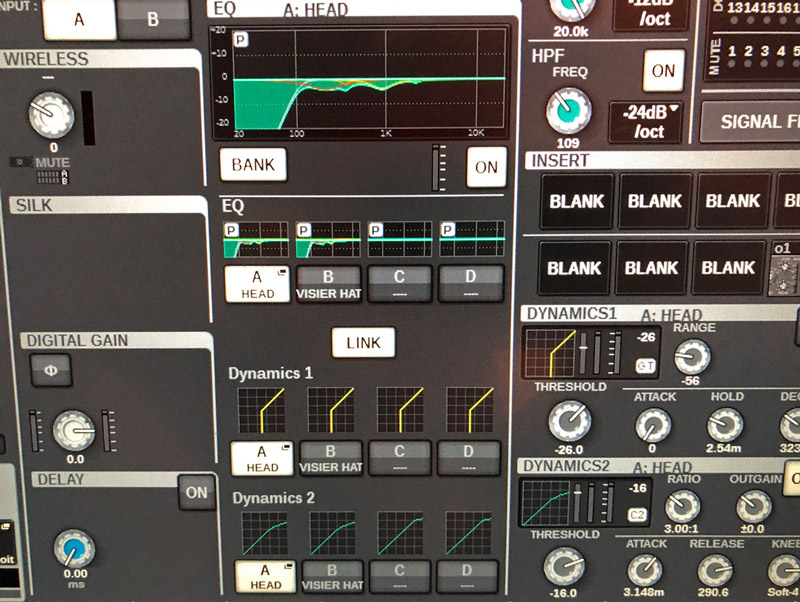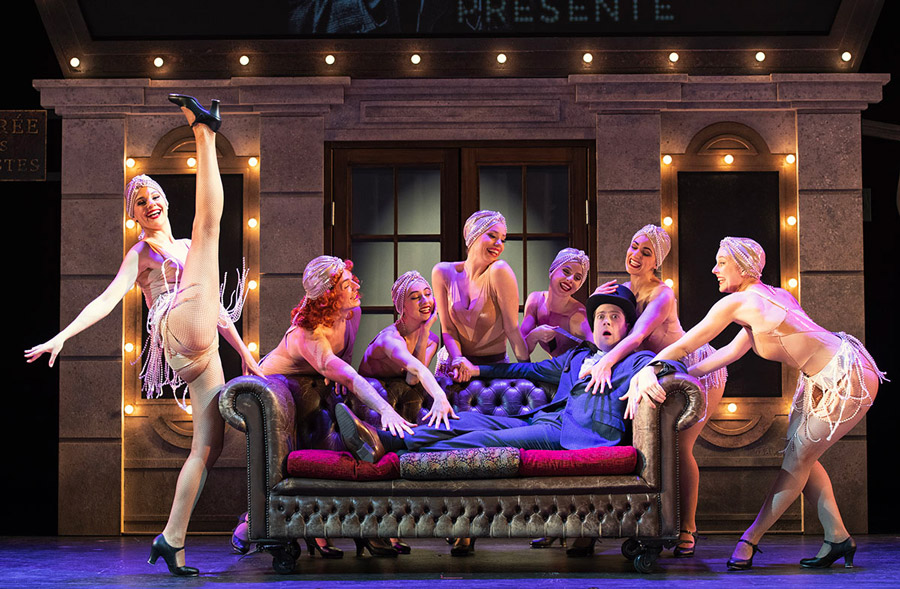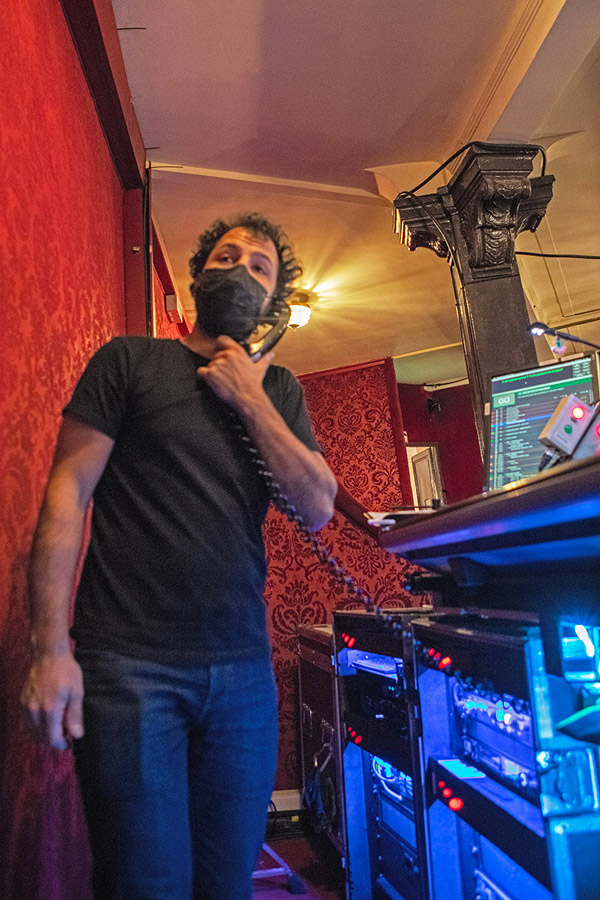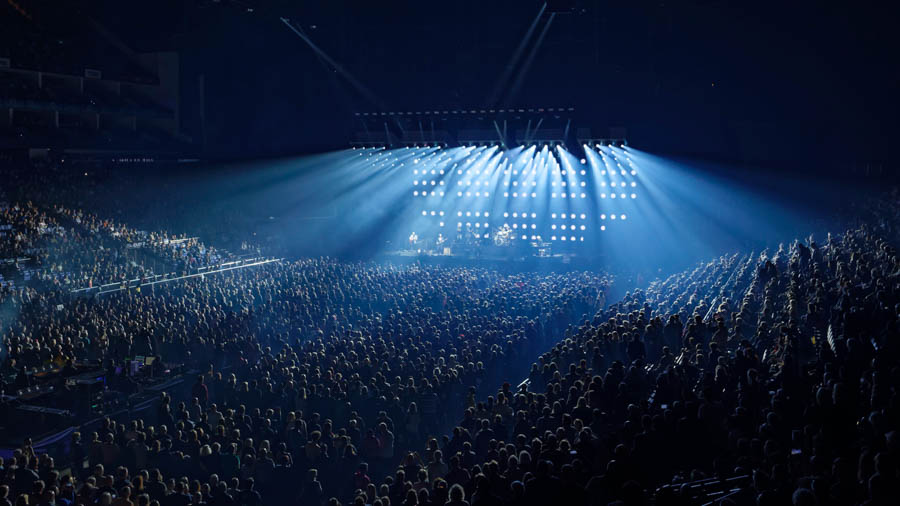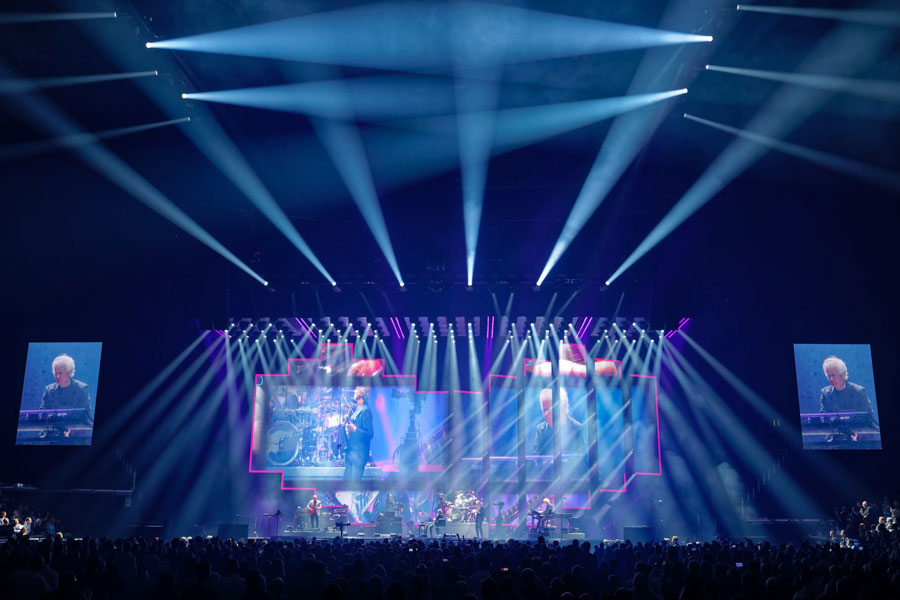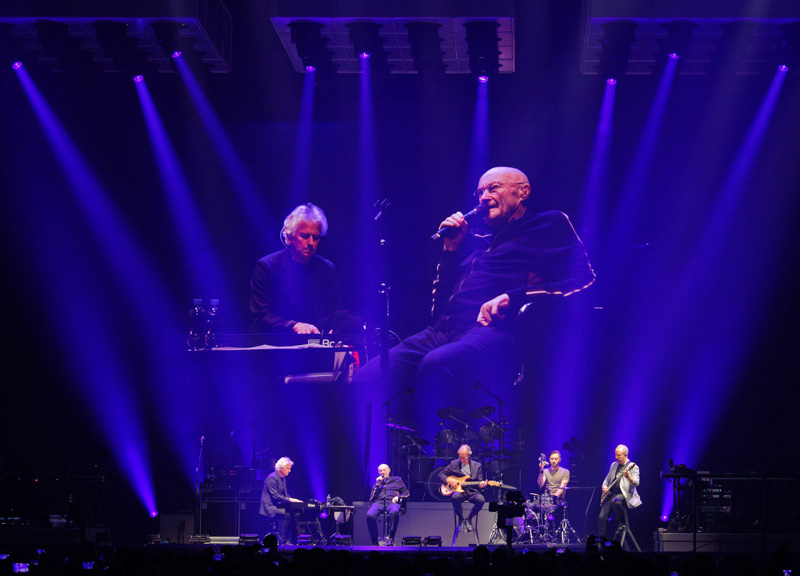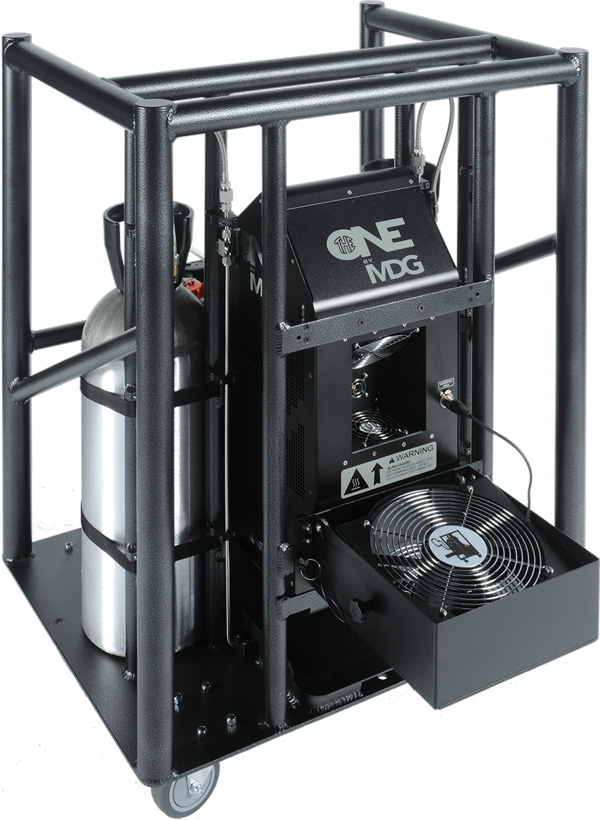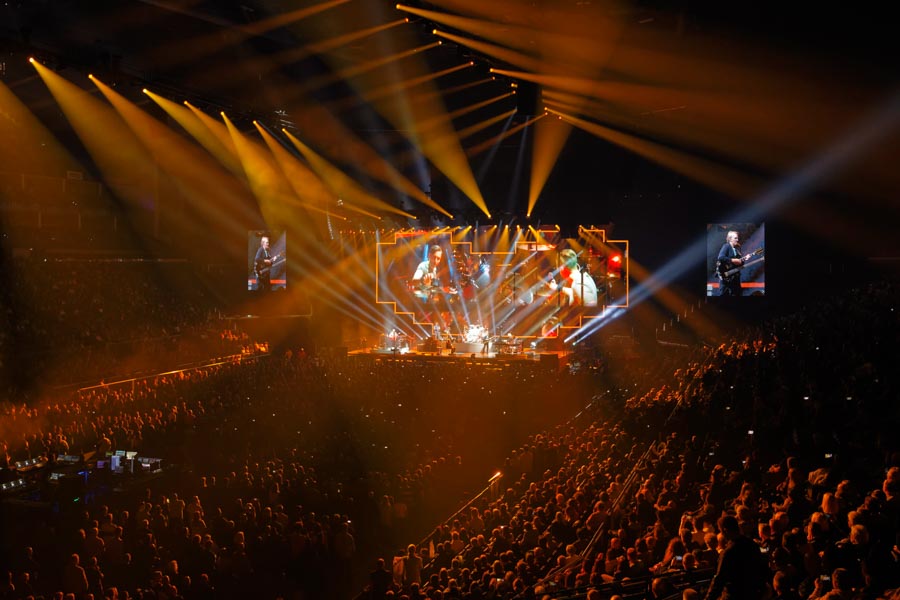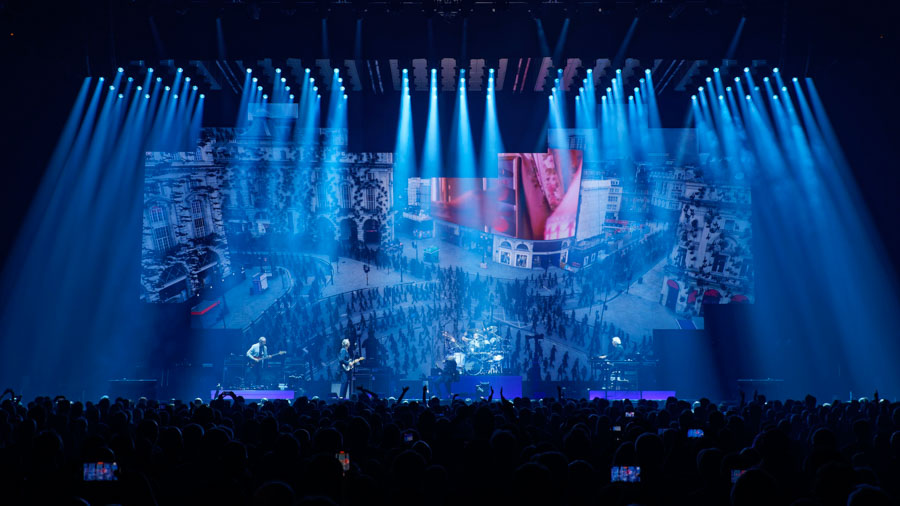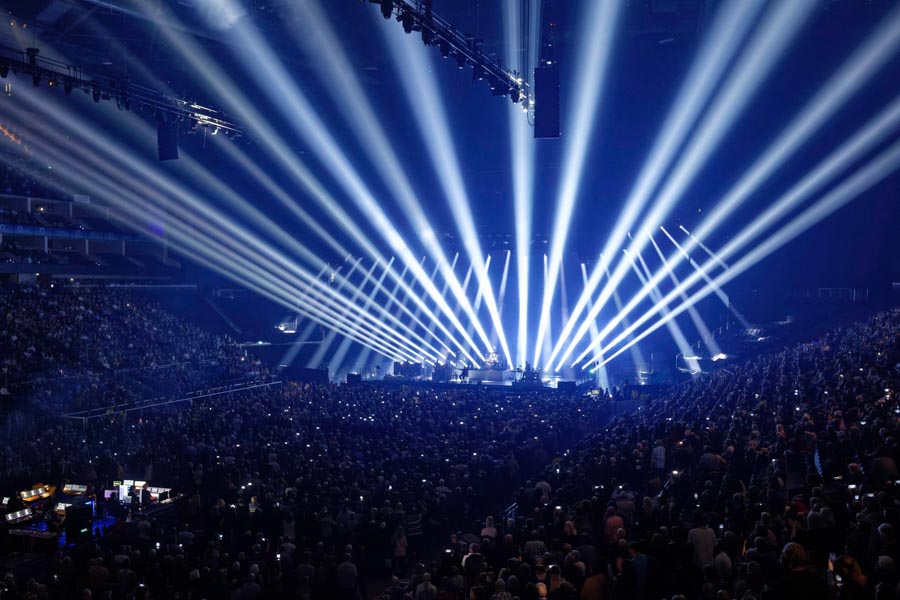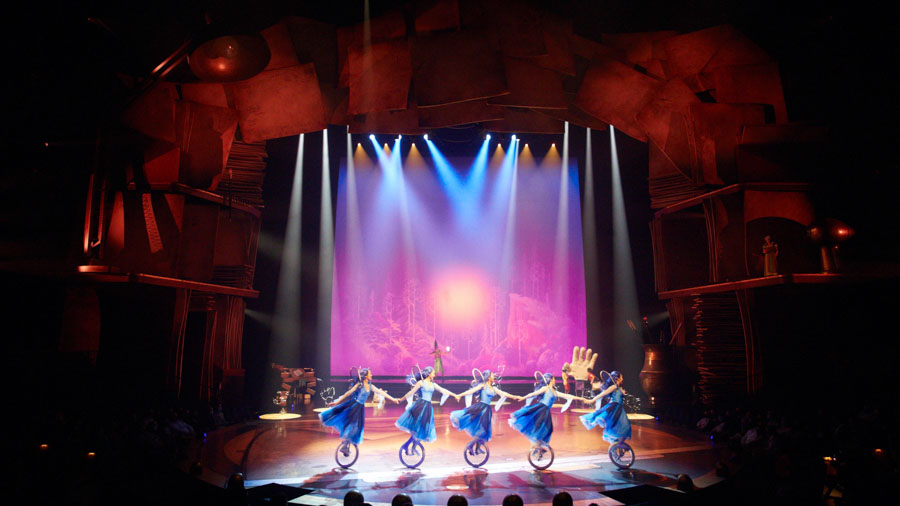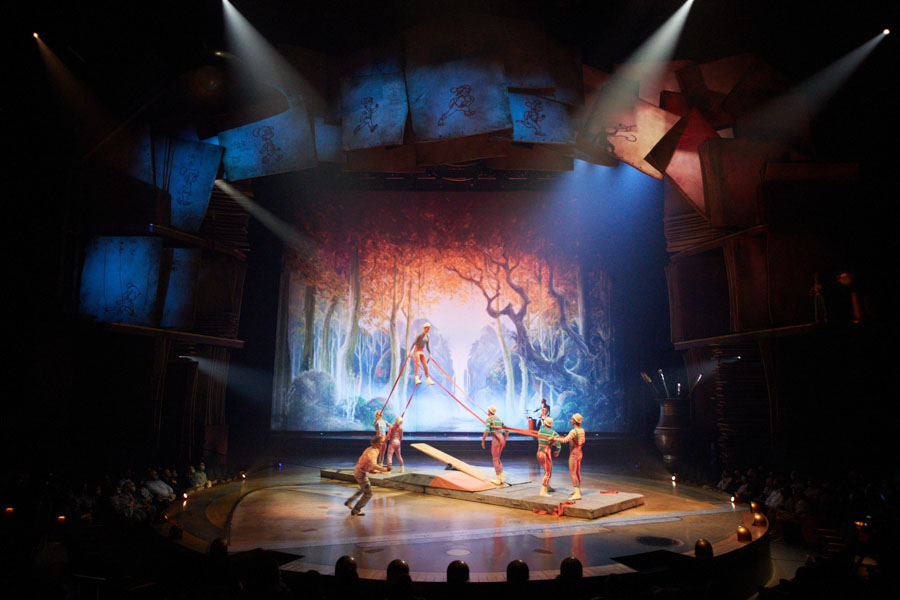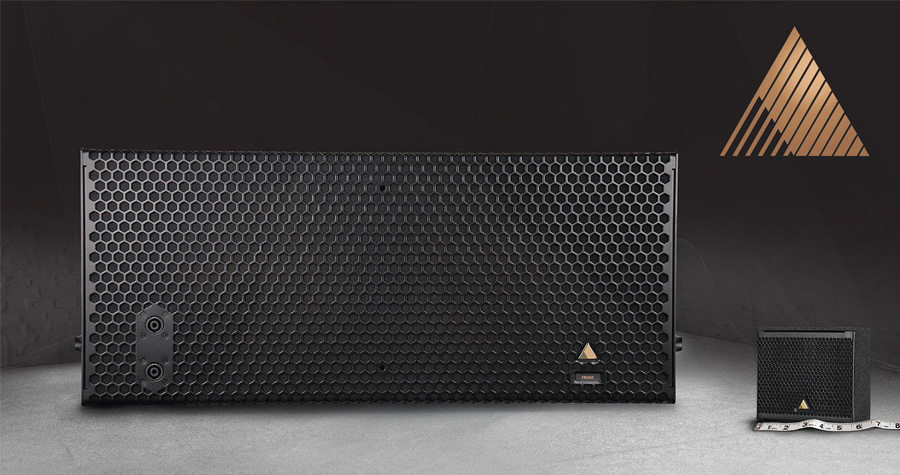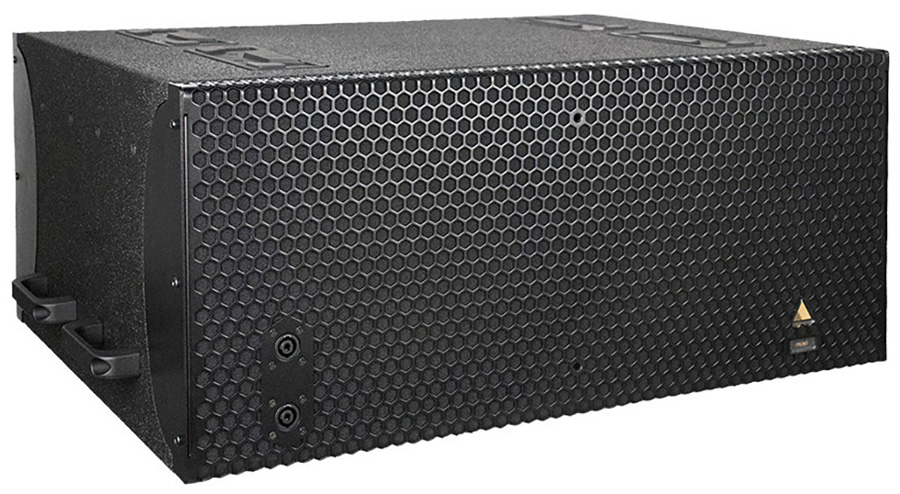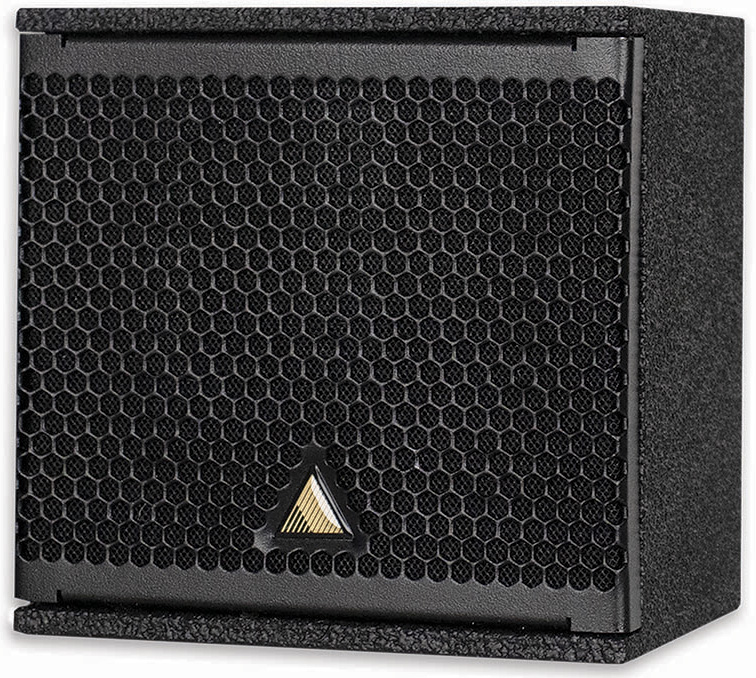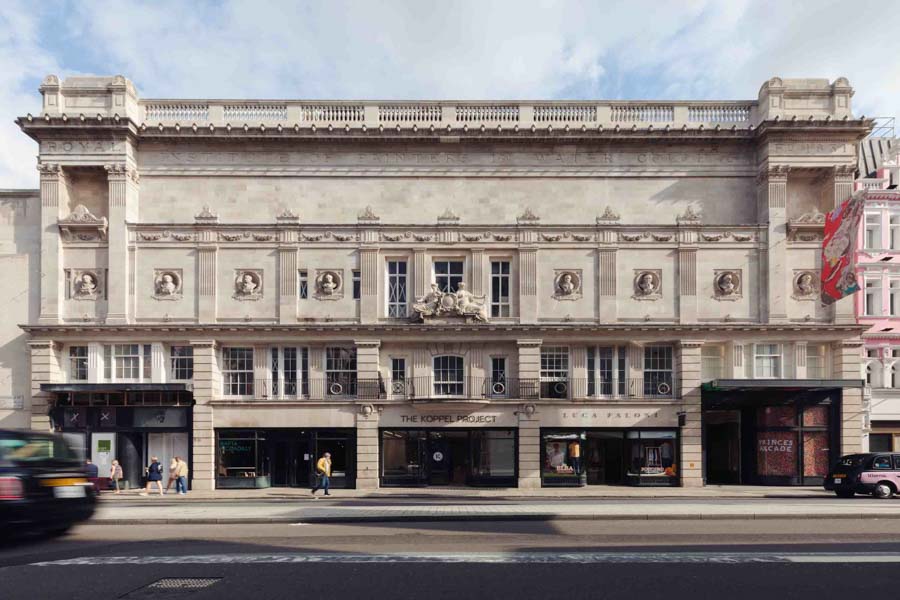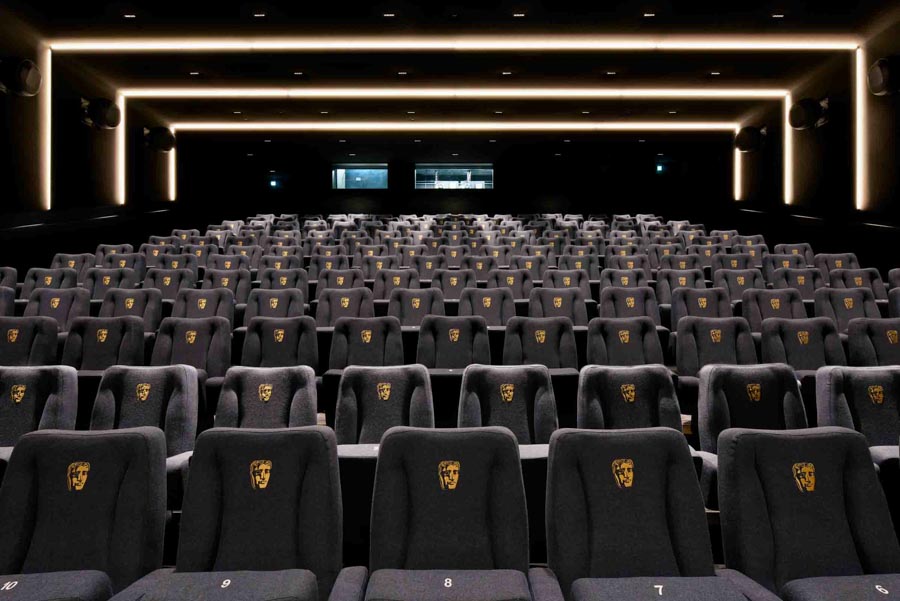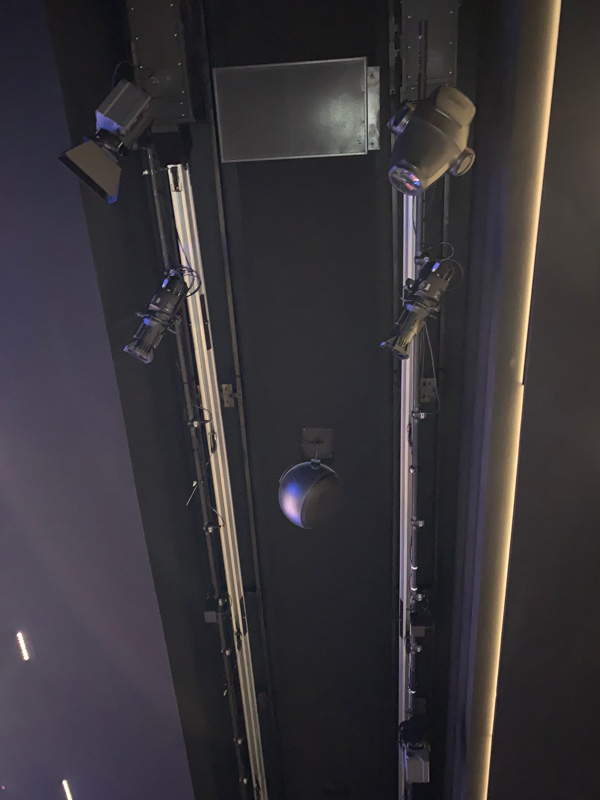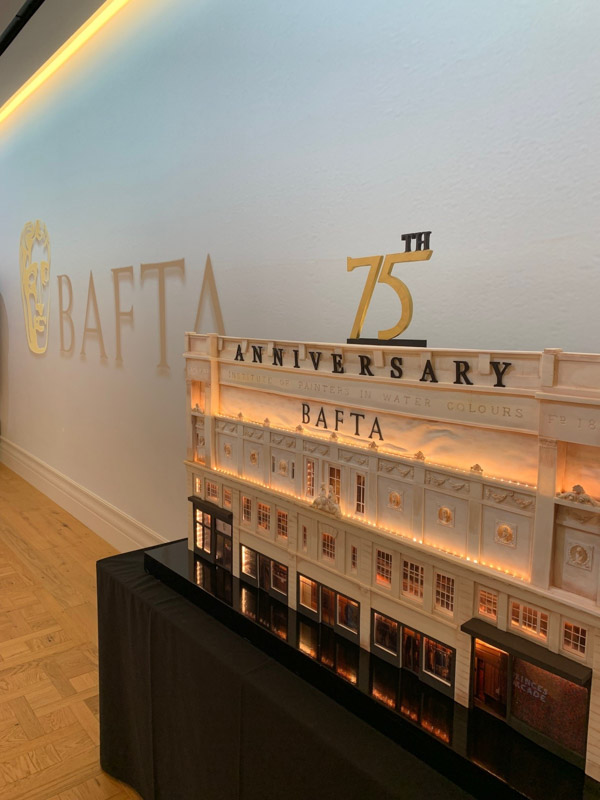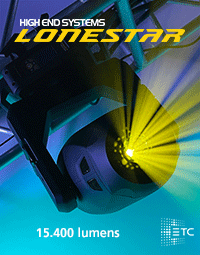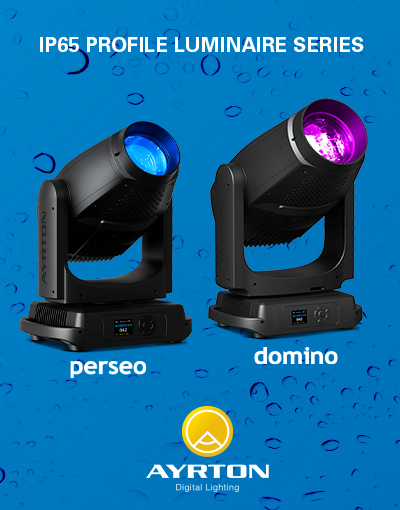Jaques Coriton, lighting Director of Theatre des Bergeries, chose Alterlite, their advice and ability to supply the new house lighting system, using led sources Anolis and its ETC control system. Good to go for at least another 15 years!
The renewal of the house lights was already on Jacques mind, back in 2018, and he had started doing his own research on the subject. After several product demonstrations and price quotes, he is interested in the Alterlite proposal his Technical Director Vincent Criulanscy submits to him. A simple solution is to have a double command system that is connected to the lighting desk.
The strength of Alterlite is combining solutions for stage lighting, house lighting, and special events, providing top-of-the-line equipment and their 25-year expertise in lighting, control systems, and data networks.
We met with Jacques at the Théatre des Bergeries, and Vincent Criulauscy from Alterlite brought the latest software update.
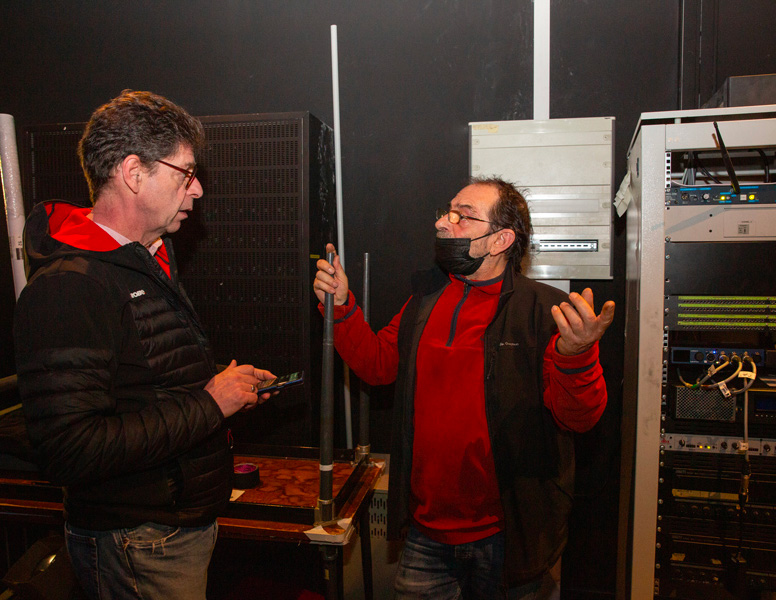
Vincent Criulanscy, directeur technique d’Alterlite (à gauche) et Jacques Coriton, régisseur lumière du théâtre des Bergeries en pleine réflexion.
Jacques Coriton : “I was able to obtain the budget necessary in 2018 to change the house lights to leds, with help from the ecological program: converting old lighting to all led sources.
I wanted a simple user-friendly button system near the stage, easily accessible, to be used mainly by the cleaning crew with the lighting desk switched off.
This simple command box should be connected to a more sophisticated system, if possible to our ADB lighting console. I also wanted to use the existing cabling already in place as much as possible, to avoid having to do new runs of DMX cabling every which way. Then came COVID, and everything ended up being stretched out from the beginning in 2018 to the final decision in 2020 to the complete installation delivered in July 2021. We were up and ready for the beginning of the season in September 2021.
Vincent brought me the solution an EchoTouch ETC. It’s linked via the sACN network to the lighting desk and to a simple remote button system from the Echo range. Enabling me to use the cabling already present in the building to run info between the EcoTouch and its remote, only two cables are needed”
Vincent Criulanscy : “The Echotouch and its remote use a proprietary protocol, with “Topology Free”, used by architectural automation systems. It’s an Echo Net bus carrying 24V power and control signal on just one pair of cables, no specific polarity is needed which makes it easier for electricians and system integrators. This range from ETC offers many possibilities and peripherals retrieving a 0-10V signal, a volt free contact signal, or signal from a temperature sensor, a movement sensor or a twilight sensor…”
SLU : “How are the lighting fixtures connected to the system ?”
Jacques Coriton : “By DMX. The EchoTouch desk is connected to the sACN network via a Netgear Gigabit GS 108 switch and I use a Luminex node to output a DMX universe reserved only for the house lights.
I send 3 DMX lines and 4 power lines of 10A each up to the fixtures on the catwalks. It’s more than enough, the line with the biggest load is 8 fixtures of 200W each.
The fixtures come with their own power supply, needing only a power outlet and DMX. The DMX signal is also sent to a dimmer rack powering the lighting for the hallways leading into the auditorium still using 2700K bulbs.
All of the fixtures are in 4-channel mode RGBW, my ADB lighting desk is not RDM compatible, I asked Vincent, for a DMXCAT to be able to have a 10-channel mode. The 4 Ch mode didn’t suit us, the issue was that the lighting would “jump” to full, and if it was faded you could see “steps ” while going to full intensity.
I wanted to compare, using a sequence in a show where the dimming of house lights was a bit of a problem recently, the 4 Ch mode and a 10 Ch mode using fine dimming (16bits).”
In the end, Vincent was able to fix the problem, 12 Ch DMX mode and he developed the necessary templates on the Liberty desk and the EchoTouch.
SLU : So, the button box, EcoTouch, and lighting desk can all control the house lights. Have you given priority to the lighting desk?
Jacques Coriton : “Exactly. When the desk is turned on it takes priority over everybody, this is for security reasons during shows and/or rehearsals, etc…”
Vincent Criulanscy : “The sACN protocol simplifies priorities between the EchoTouch and the desk to control house lights. It’s actually automatic. The notion of priorities is non-existent in Art-Net. The other advantage of using sACN, which is a real Multicast, is it controls IP addressing natively unlike Art-Net.
When hosting an event, and the desk operator brings his own lighting console (grandMA or other types) you just give them his RJ45, and they plug it in, and that’s it. No need to change their IP setup, the protocol looks after the addresses. This is the big advantage of sACN.”
SLU : Who did the installation?
Jacques Coriton : “I did it, with help from Hugo Revy a trainee who looked after hanging all of the fixtures. There was a bit of handiwork needed, the EchoTouch is delivered not completely cabled up. You need to drill a few holes in it, put mounting brackets on it, put in our cables, and wire it up inside.”
Vincent Criulanscy : “This product is a module that can be integrated depending on your needs. Jacques wanted it to be mobile, so we needed to do the necessary adaptations.
On the EchoTouch there is an RJ45 and a DMX plug, a link to the remote, and a power supply. The front panel is magnetic for easy access to the USB port used to load its internal memories.”
SLU : What type of lighting console do you have?
Jacques Coriton : “It’s the ADB Liberty with the digital tablet Wily ! by Pangolab which is the perfect remote for this desk. The tablet can control everything, colors, moving light fixtures, master faders, sequences, general master as well as the sequence master. Wily! can also control the house lights.
We have had the Liberty since 2015, and have recently acquired a second-hand one via Vincent, to have a spare, we are concerned somewhat with the durability of the motherboard. The latter was for 120 channels, we upgraded the licenses to 240 channels.”
SLU : Are you planning on replacing it?
Jacques Coriton : “Probably, but that will be done by the person replacing me when I retire in a few months…”
Choosing the Anolis light sources.
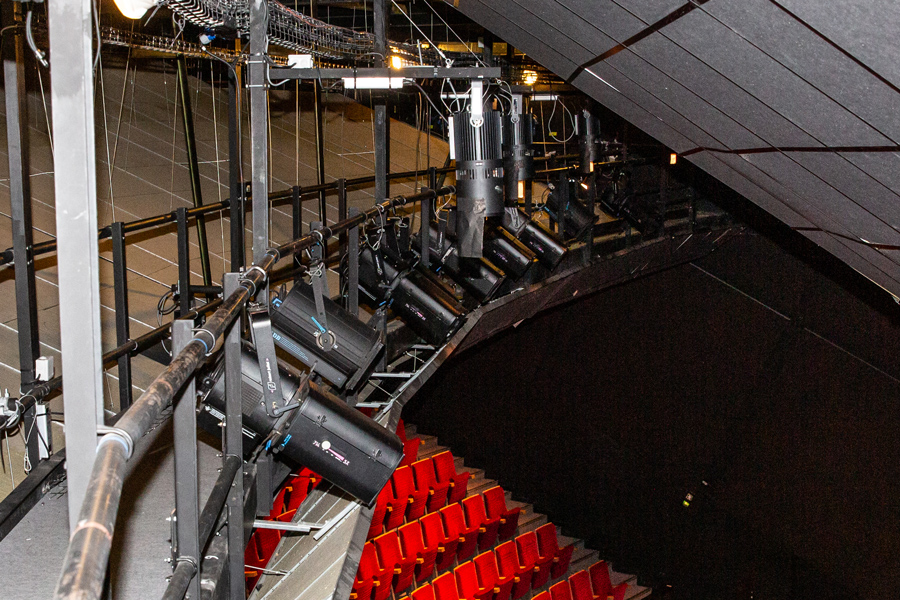
Les Ambiane XP56 Anolis accrochés sur la dernière passerelle ne gênent pas la sortie des projecteurs scéniques.
Changing the house lights Jacques, and following some advice from Alterlite, chose the XP 56 et HP 111 in the Ambiane Anolis RGBW series, the architectural line by Robe.
SLU : Why did you like the Anolis?
Jacques Coriton : “As I said before, we had asked for several quotes including one from Asterlite and as it was Vincent who found the solution for our control dilemma, we didn’t look any further and went with the Anolis.
As for the moving lights, we are already fully equipped and fully satisfied with Robe fixtures. We have Wash Beam Spiider’s, LEDBeam 150’s, and motorized framing spots the DL4S.
When Jérôme Lambeau, from Robe, came by to optimize the Anolis installation, I asked him to update the software of all of our Robe fixtures, especially the LEDBeam’s that I had just purchased, recalibrating the colors. We have no problem with matching colors.”
SLU : How did you define where to hang the Anolis?
Jacques Coriton : “First, with Bruno François (head of the installation department at Robe) we did a DIALux study to determine the positioning of light sources, depending on the focal angle specified by the manufacturer to have the luminous flux as even as possible throughout.
Then, we did a true-to-life trial by hanging a few fixtures to see how many seats were covered, and to determine the number of fixtures needed. We trusted the DIALux study, however, we had to reduce our order slightly.
We also compared this with some PC(plano-convex/single lens) 1000W rigged on the catwalk to measure the difference between the two. We decided on 22 Ambiane XP56 (150W of leds) with 60°, 45°, 30°, and 20° lenses, depending on their placement, to be sure to have the same level of light all over the venue. We chose 2 HP111 with an 80° lens (75W) for under the overhang.
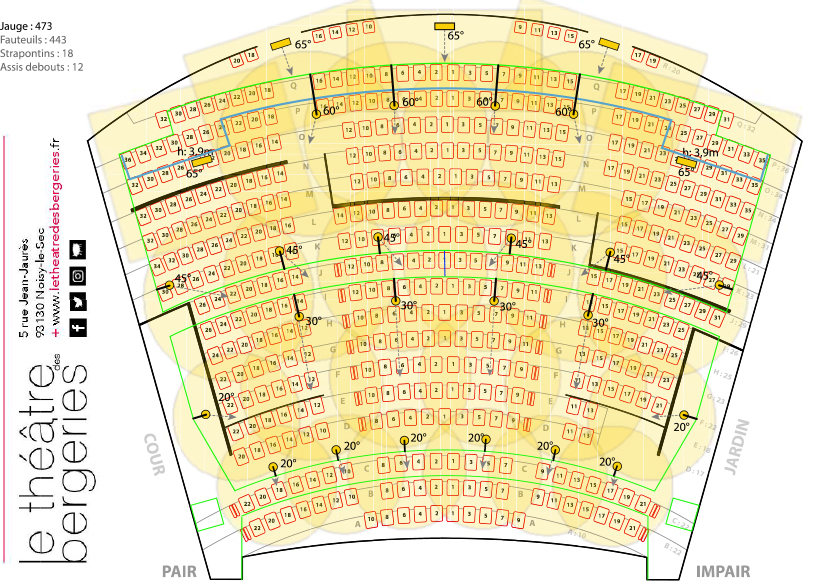
Jacques Coriton a finalement opté pour une répartition de 22 projecteurs XP 56 et 2 HP 111. Ils sont dimmés pour un éclairement de 350 lux au niveau des sièges.
Vincent Criulanscy : “One of the major strong points of the Ambiane series, when working with colors, is that there are 150W of led for each shade. This means that if you want to use a deep red, you get 150 watts of red, and then going from white to red your luminous flux is practically the same. The power supply is curbed to never exceed 150W. Even by putting everything to full, you are using a portion of the leds to not go over 150W.
As an option, you can have a second input so the fixtures work as emergency lights along with the rest of the emergency lighting, which is not the case here. It’s possible that the fire detectors send a signal, via the second input, to turn the fixtures on automatically. They are designed for architectural lighting.”
SLU : Which color temperature do you use for the house lights?
Jacques Coriton : “Warm white 100% white and 35% red, very close to 2700 kelvin.”
SLU : Which presets have you programmed for the EchoTouch?
Jacques Coriton : “On the remote, there are only 8 programs (buttons).
Number 1: Lights at a sort of FULL (good for cleaning crew, work in the auditorium, etc)
Number 2: Low level (daily use, ability to see to move freely within)
Number 3: Audience walk-in (Full audience capacity)
Number 4: Audience walk-in (Half audience capacity)
Number 5: Walk-out Full audience
Number 7: Walk-out Half audience
Numbers 6 and 8: Spare (not used)
SLU : Did you need to have the possibility to change colors?
Jacques Coriton : “Yes it’s been requested a few times since the beginning of the season: dark blue then slowly to a lighter color, or color chases, so the house lights and the colors follow the scenography. The price is the same for either RGBW or just white, so why not go for this possibility? If you are investing and doing the work necessary, might as well go all the way.”
SLU : How long does it take to pay off this investment?
Jacques Coriton : “I have no idea. That is a part of the accounting that I am unaware of. From my point of view, it has already paid off because the old setup using wide lens PAR 56 was mediocre.
Also, they (PAR 56) were hung from a square metal bar and were in the line of sight of the fixtures used for the stage lighting, blocking part of the beam. I kept 2 of the hanging structures for the Ambiane HP used under the overhang on each side.
The new rigging system for the Ambiane XP allows them to stick through the acoustic panel. We drilled oval holes in the wood panels.
On the upstage side of the catwalks, we secured metal bars just above the panels to not get in the way of the stage lights. We drew on the rigging points and had them made by a locksmith.
Jacques Coritons’ professional background
SLU : Jacques, tell us about your professional background…
Jacques Coriton : “My initial training had nothing to do with entertainment. I am an engineer, I obtained my degree at Arts et Metiers in 1980. I rapidly changed my professional orientation when I realized industrial work was not really my thing.
It took me 3 years to get into entertainment, started by doing some volunteer work, then joined the Club Med for my first hands-on experience which enabled me to get a job as an electrician in theaters in the Nantes area. I then followed a course at ISTS in Avignon, then came to Paris with my “intermittent” status (a specific status in France for temporary workers in the entertainment industry).
I found work in theatrical touring and also hosting tours in my theater, many were child-oriented. During my 25 years in the business, I did at least one tour a year.
I worked notably for the Centre des bords de Marnes in the Perreux district as an electrician or as lighting director, at the Sartrouville theater with Sylvain Maurice.
I toured with Olivier Py for 3 shows, worked as an electrician and as a lighting director at the Grande Halle from 1995 to 2008, for some new theatrical companies such as Théatre Temps with Yamina Hachemi, Kick Théatre with René Cheneaux, Sambre with Carole Thibaut…In 2012, following the unfortunate passing of Marc Pracca lighting director of the Théatre des Bergeries, I followed in his steps. I have been here ever since.”
The Théâtre des Bergeries
The Théatre des Bergeries, with director Lucie Chataigner, was inaugurated in october 2000. Situated in the heart of Noisy-le-Sec, it has a capacity with fixed tiers of 472. The main auditorium hosts a variety of events, theater, dance, puppet shows, circus arts, classical music, jazz or pop music, and repertoires. All artistic creations have at their disposal a stage with a maximum width of 14m with wings (total 18m from wall to wall) and 13m deep.
The smaller room, which is the same total size as the stage in the main auditorium, is reserved for rehearsals, artistic workshops, smaller shows, and creative residency. It can also host small or more ” intimate” shows with a limited capacity (stand-up, small plays, concerts, shows intended for children…)
Our team consists of 16 full-time employees, with four of them in the technical crew. The entire sound system was entirely updated by Pascal Flamme, with the help from the company Videlio, during the COVID “pause”. The FOH speakers were replaced with Line Source Nexo M10 and MSUB18 and a “kit” of monitor speakers, it’s all powered by NXAMPmk2 by Nexo controlled by the Dante network and the NEMO application, and, as always our FOH sound desk the Yamaha CL5.
The stage lighting is made up of PCs (single lens) by ADB and profiles by Robert Juliat, all with tungsten sources, powered by RVE dimmer racks, with some that are moveable. The moving lights are from Robe.
Technical Crew :
Pascal Flamme: Technical Director
Nicolas Mermet: Stage Manager
Jacques Coriton: Lighting Director
Hugo Revy: Lighting Technician
Myriam Claret: reception of artists




